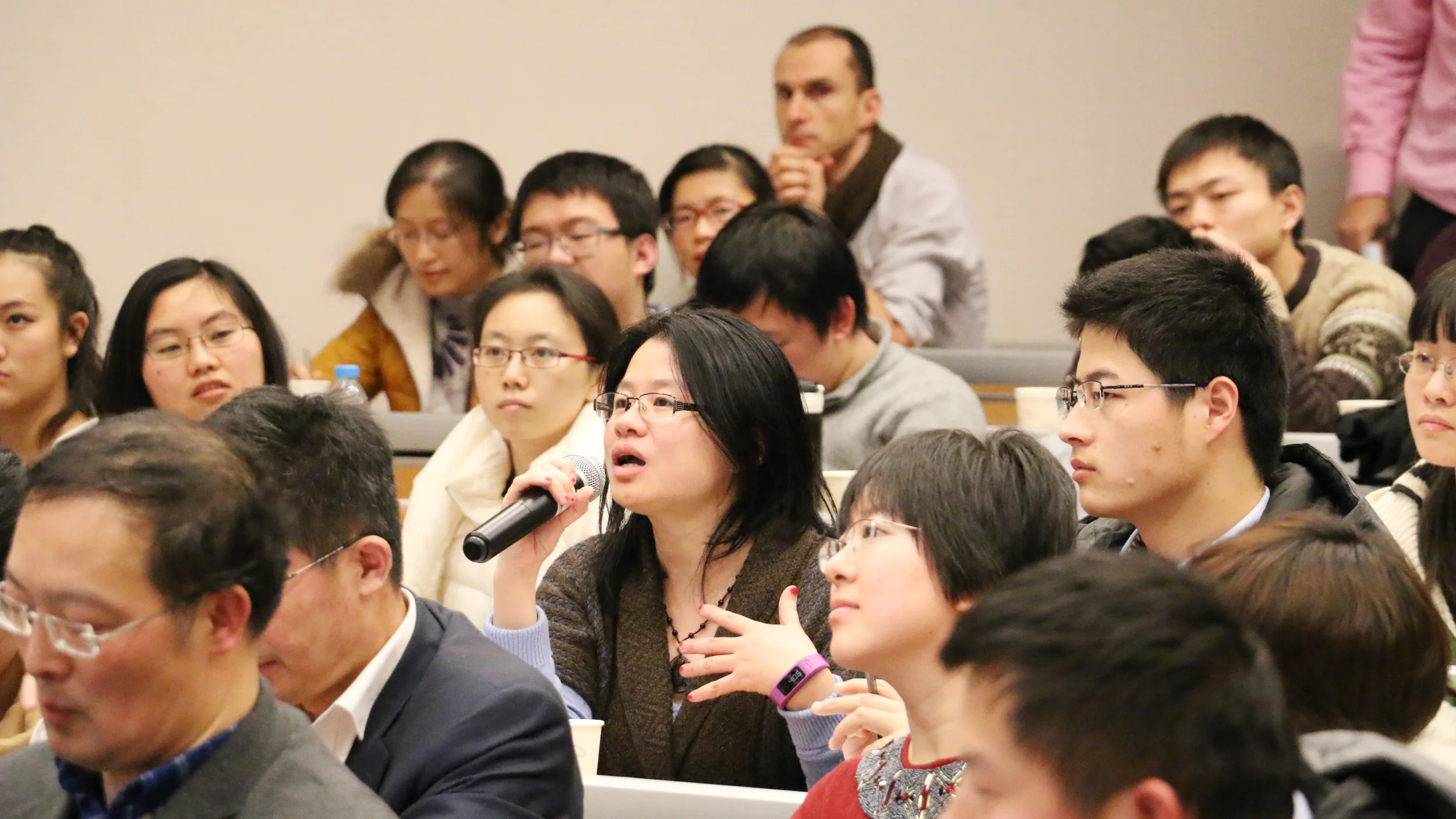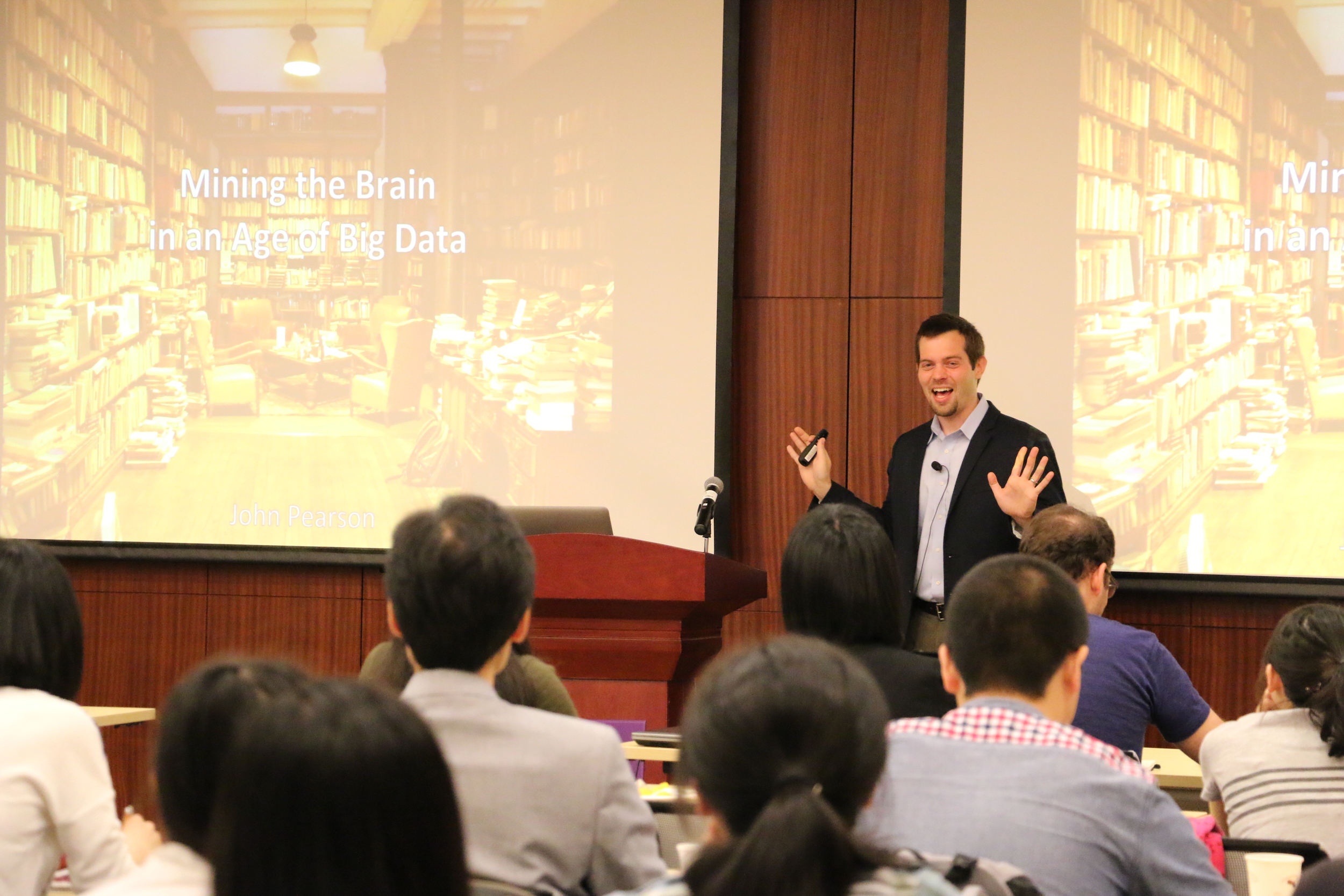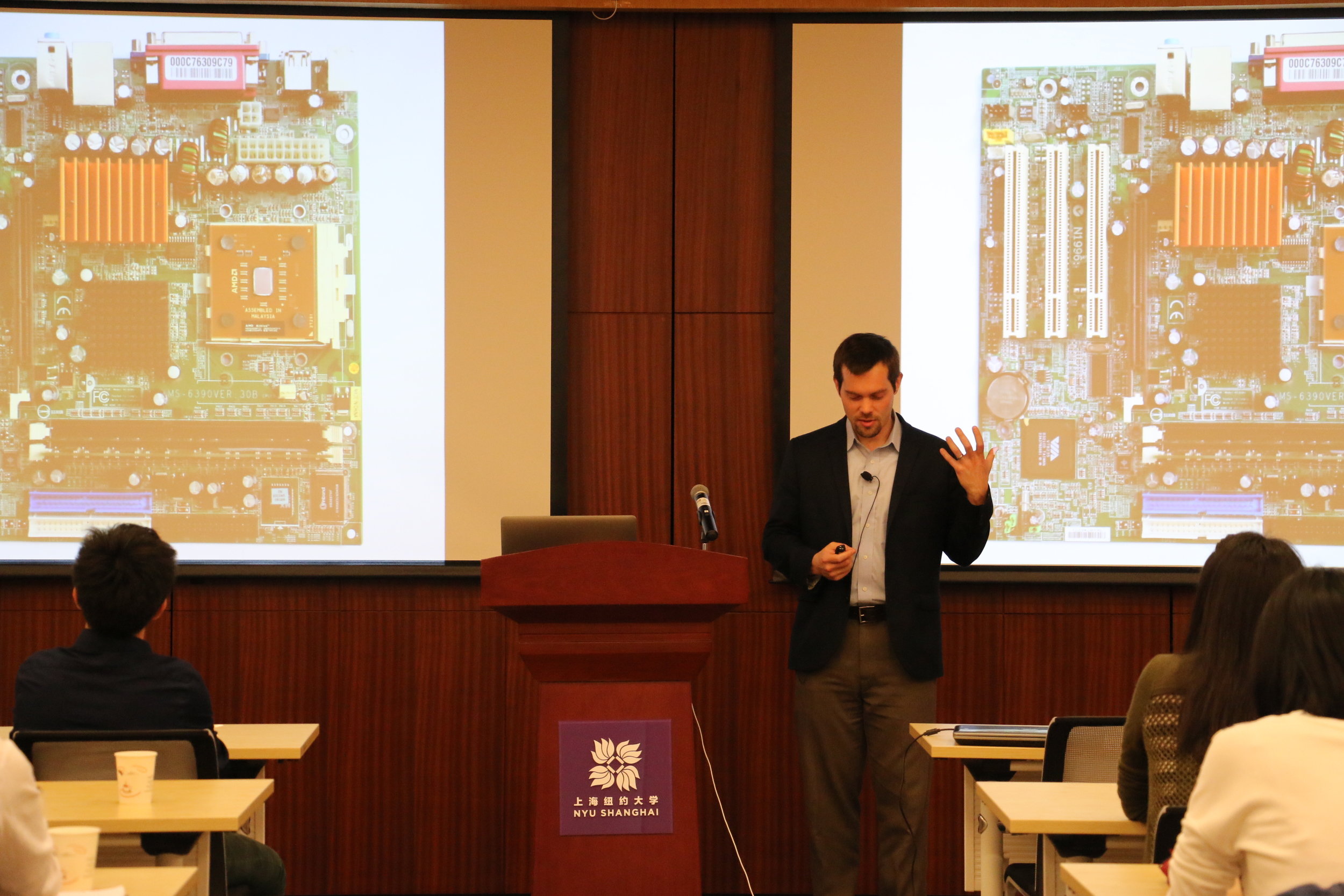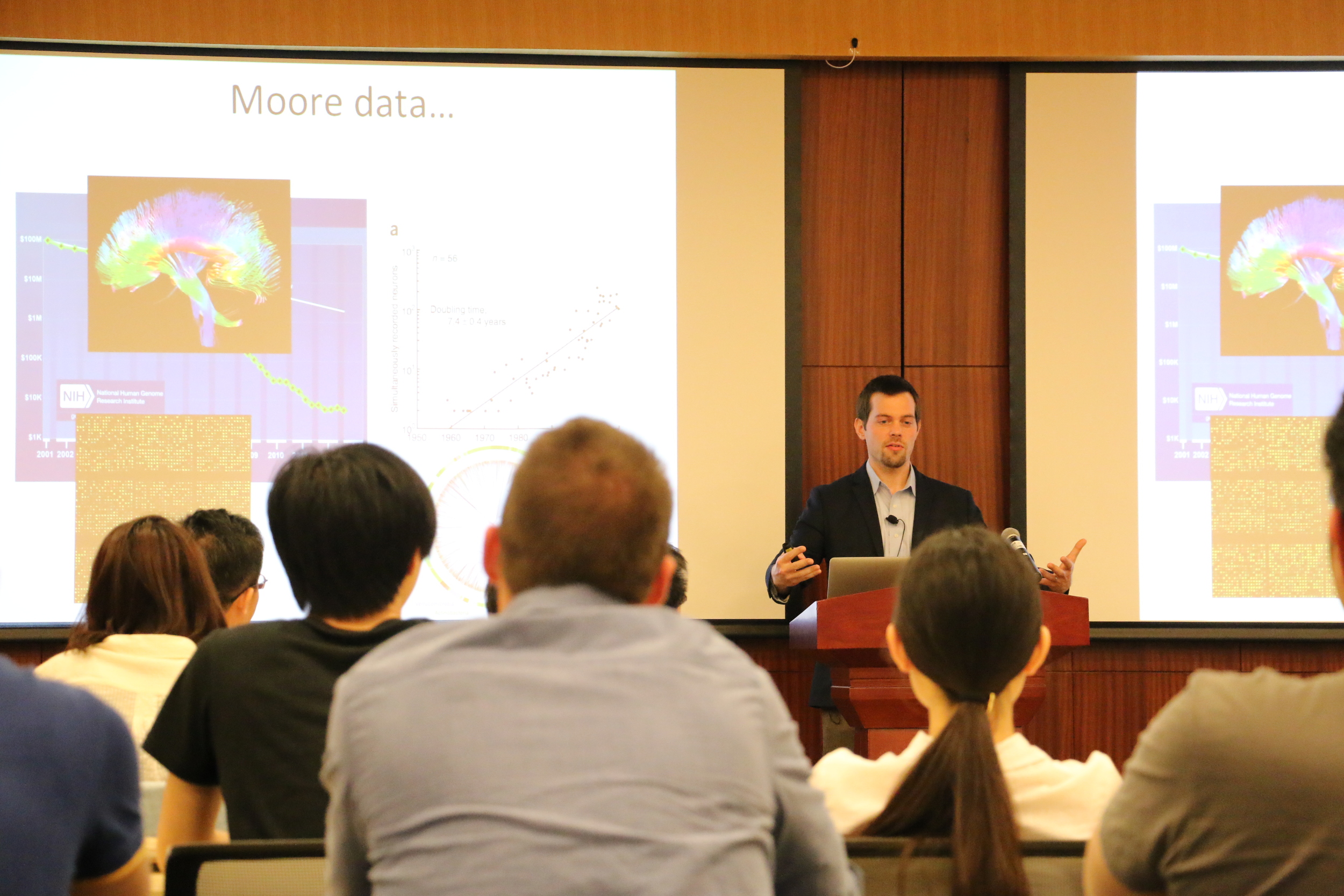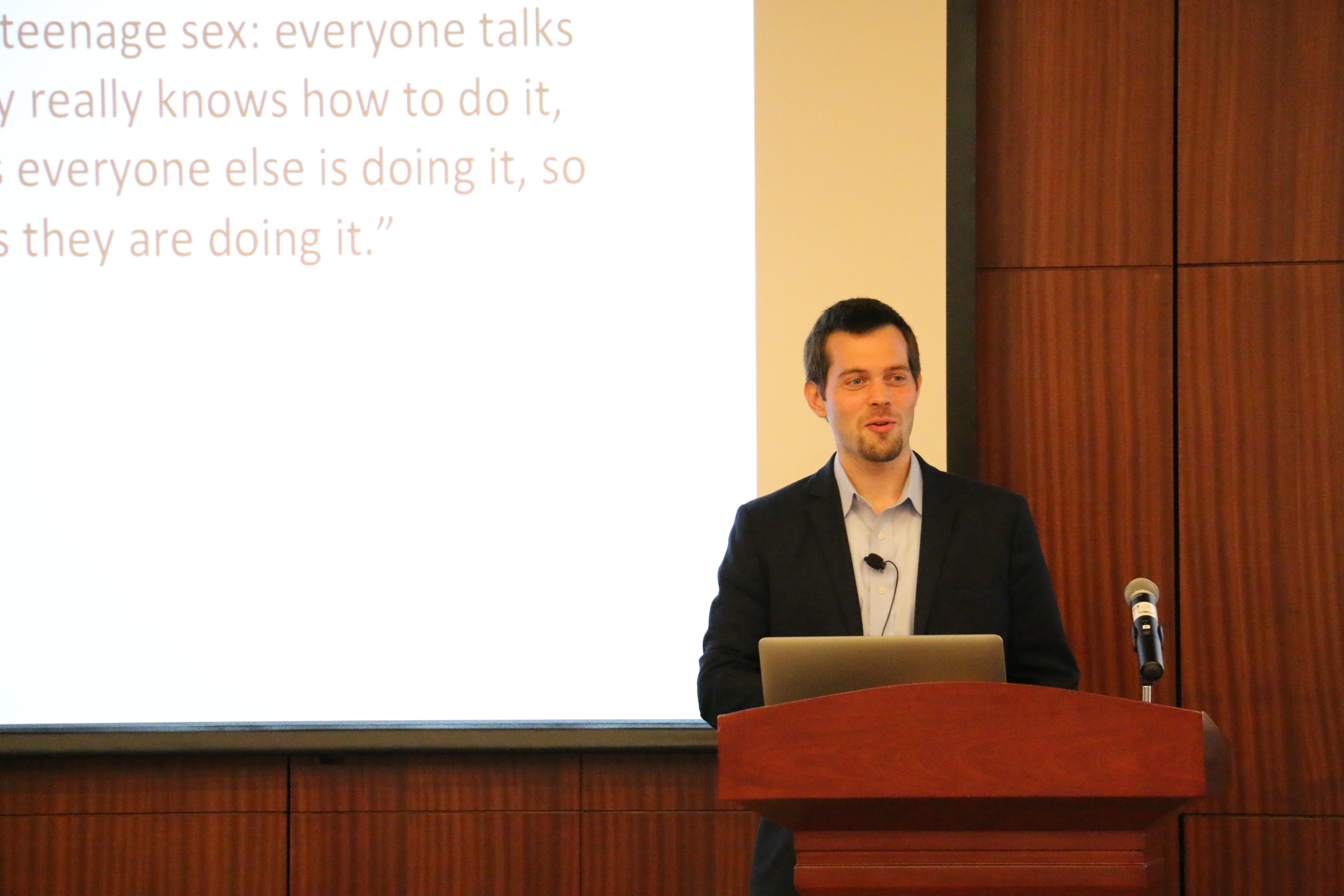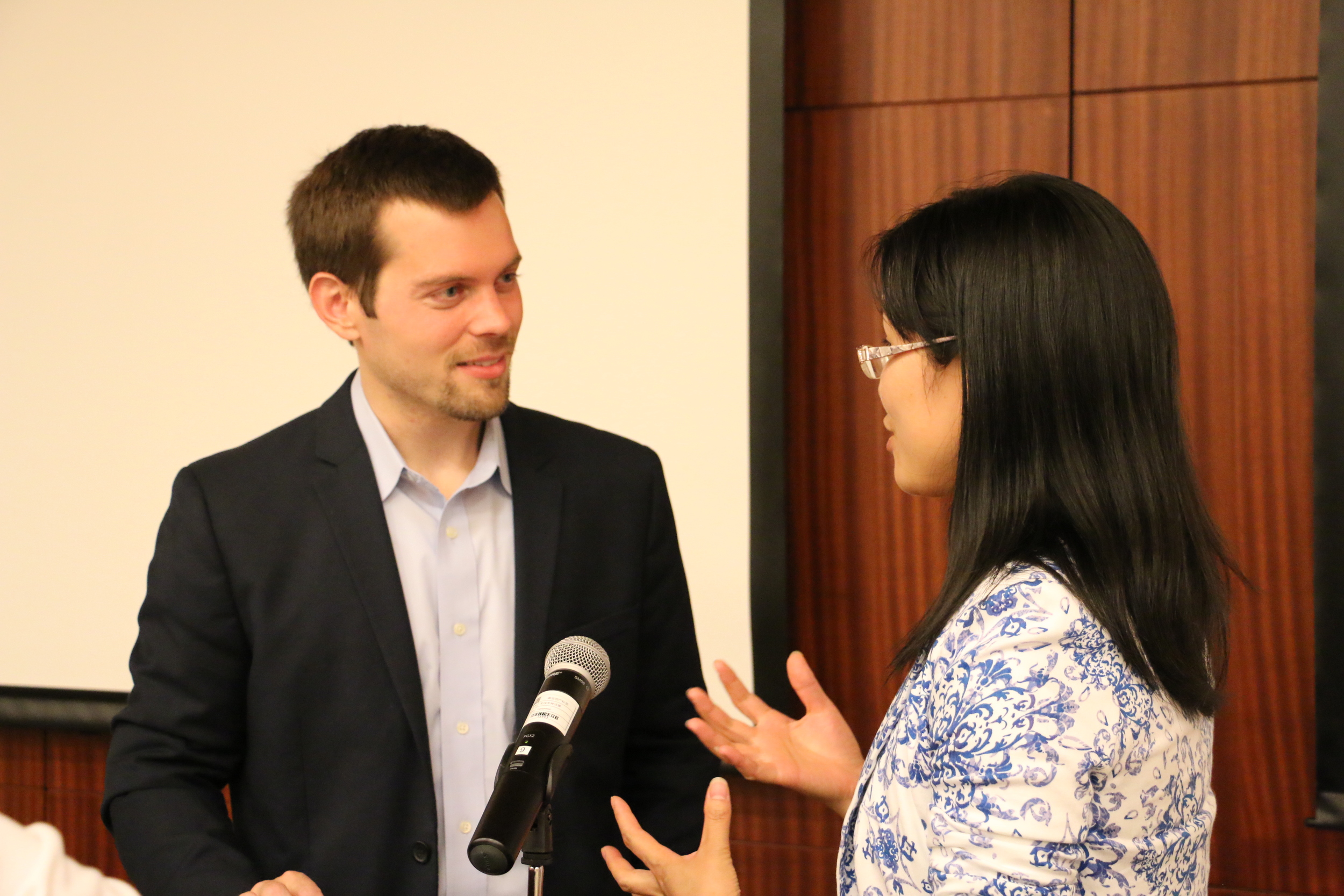Past Colloquia
October 15, 2015
Jeremy M. Wolfe, PhD
Professor of Ophthalmology and Radiology, Harvard Medical School
Jeremy Wolfe is Professor of Ophthalmology and Professor of Radiology at Harvard Medical School. He is Director of the Visual Attention Lab and the Center for Advanced Medical Imaging at Brigham and Women's Hospital. Wolfe received an AB in Psychology in 1977 from Princeton and his PhD in Psychology in 1981 from MIT under the supervision of Richard Held. His research focuses on visual search and visual attention with a particular interest in socially important search tasks in areas such as medical image perception (e.g. cancer screening), security (e.g. baggage screening), and intelligence. He is Immediate Past-Chair of the Psychonomic Society and just ended his term as Editor of Attention, Perception, and Psychophysics.
News article: "Shanghai Colloquium in Neuroeconomics: “If I Can See So Much, Why Do I Miss So Much?” (NYU Shanghai)

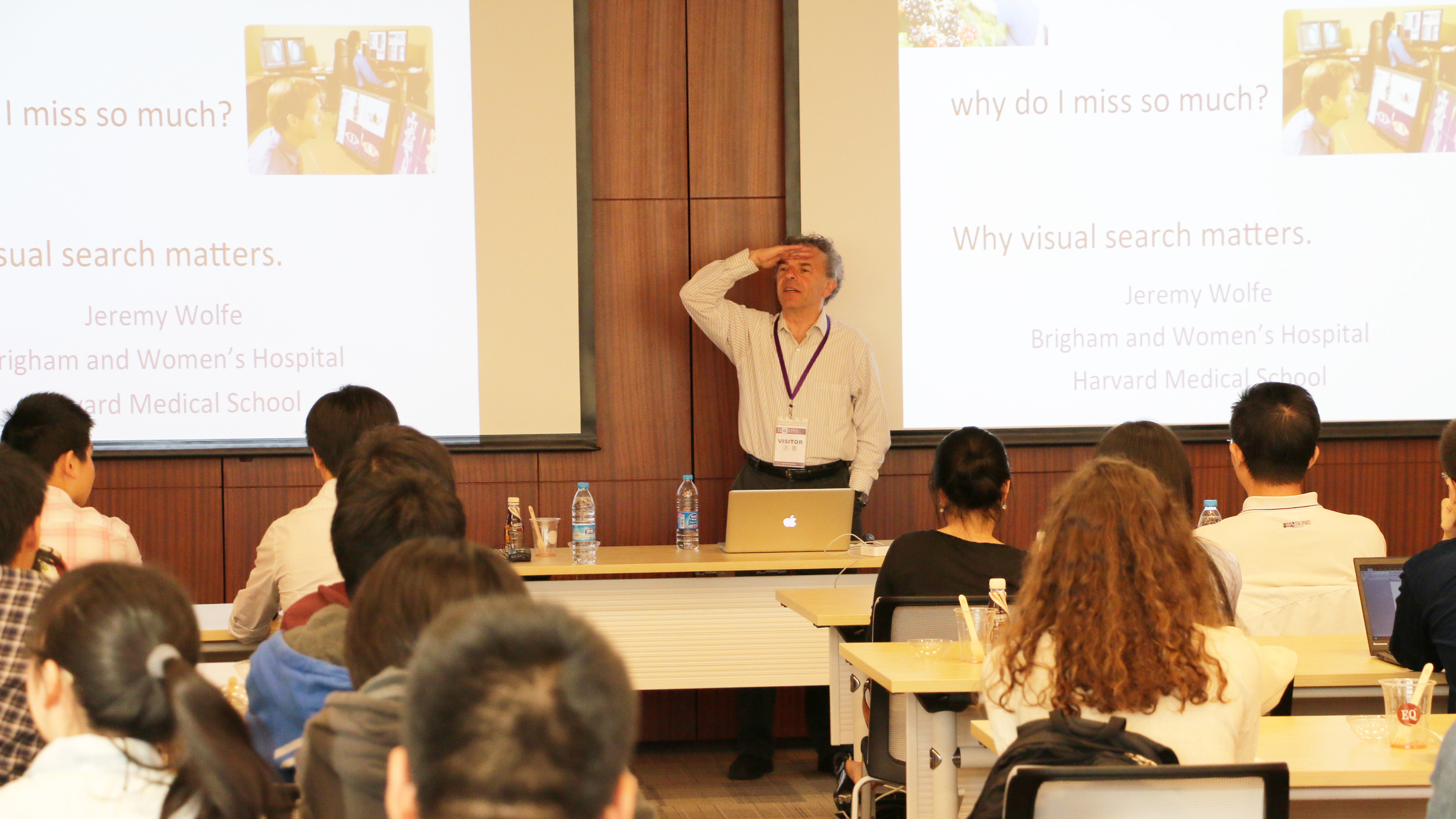
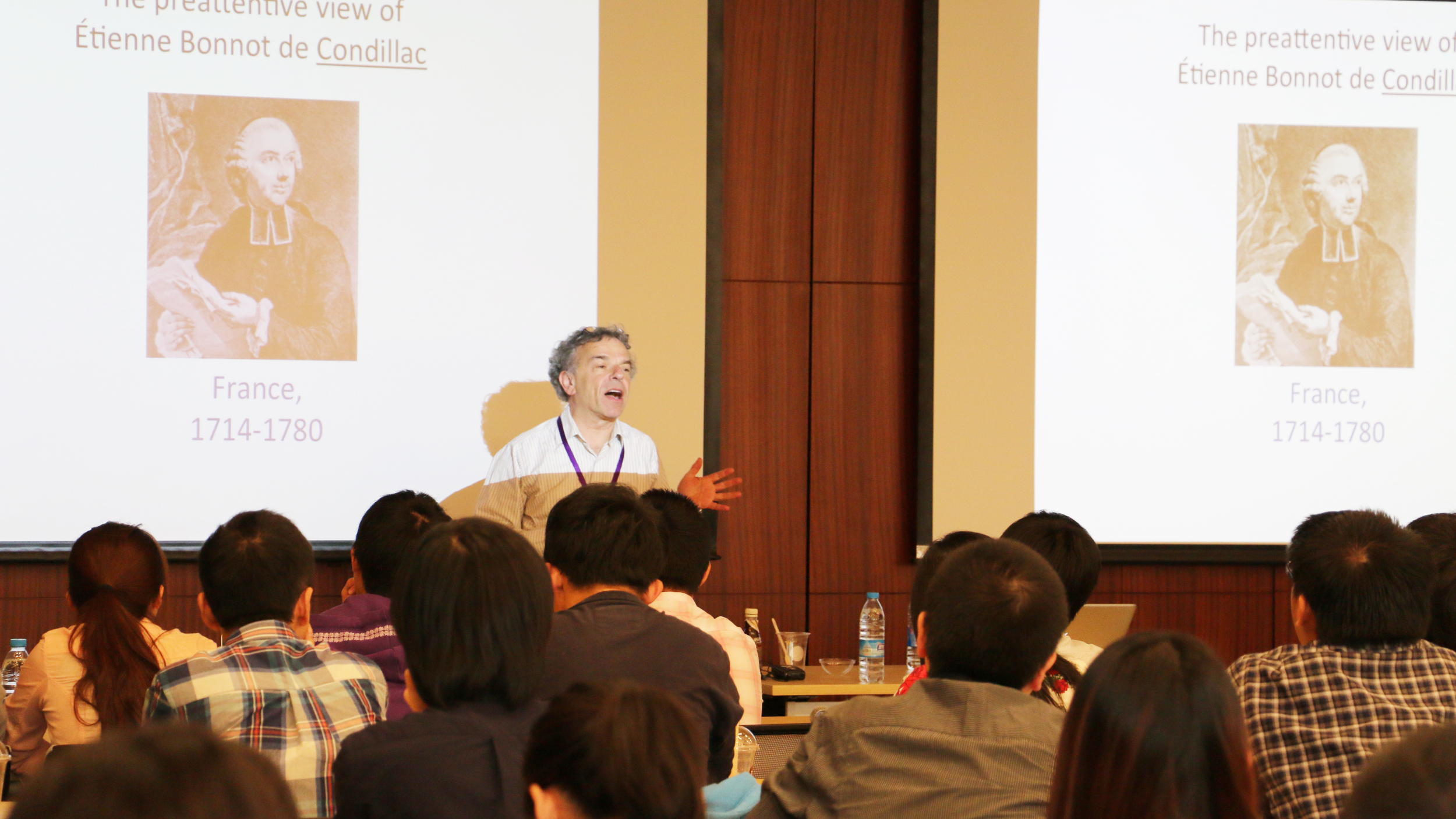
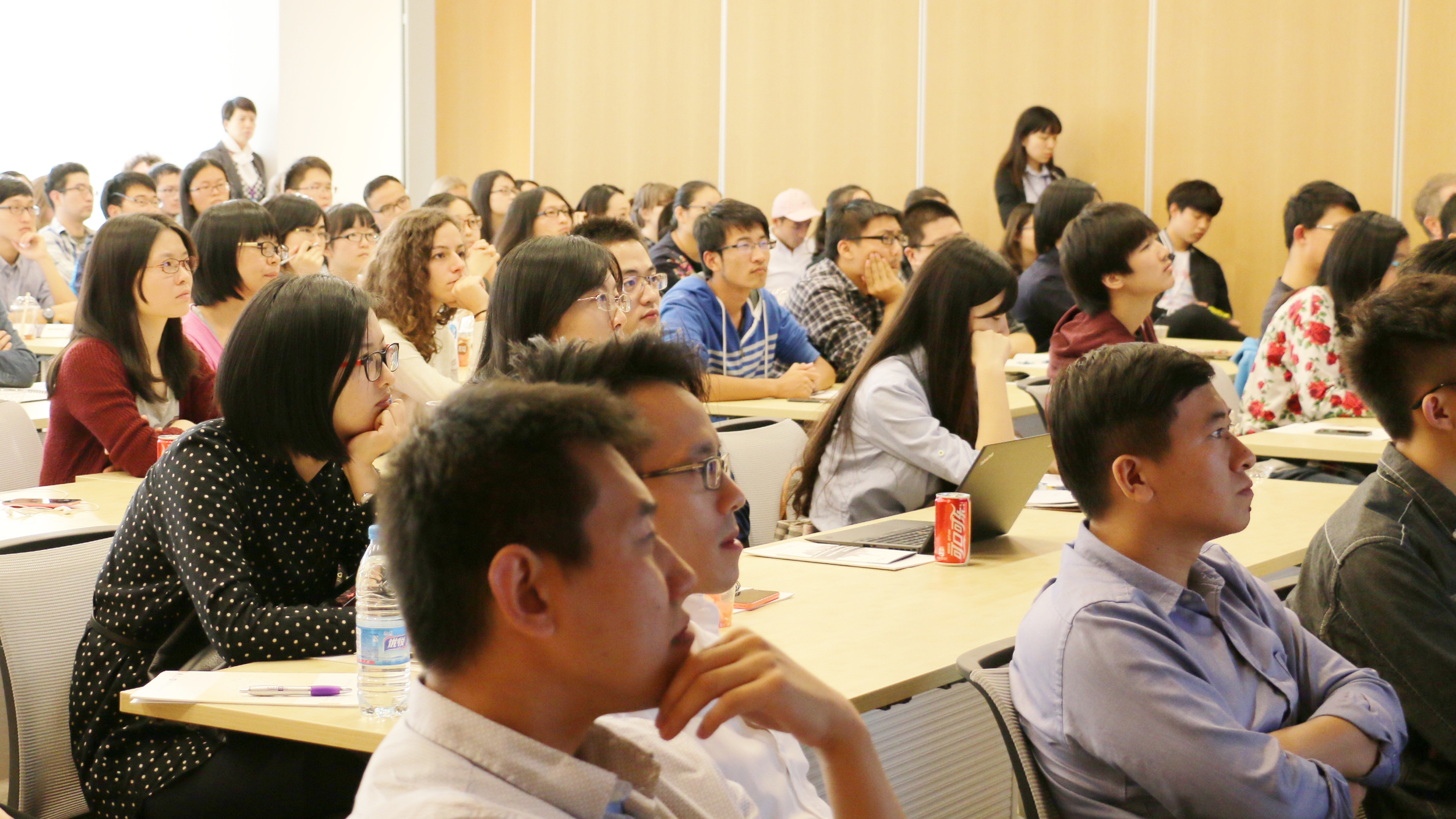
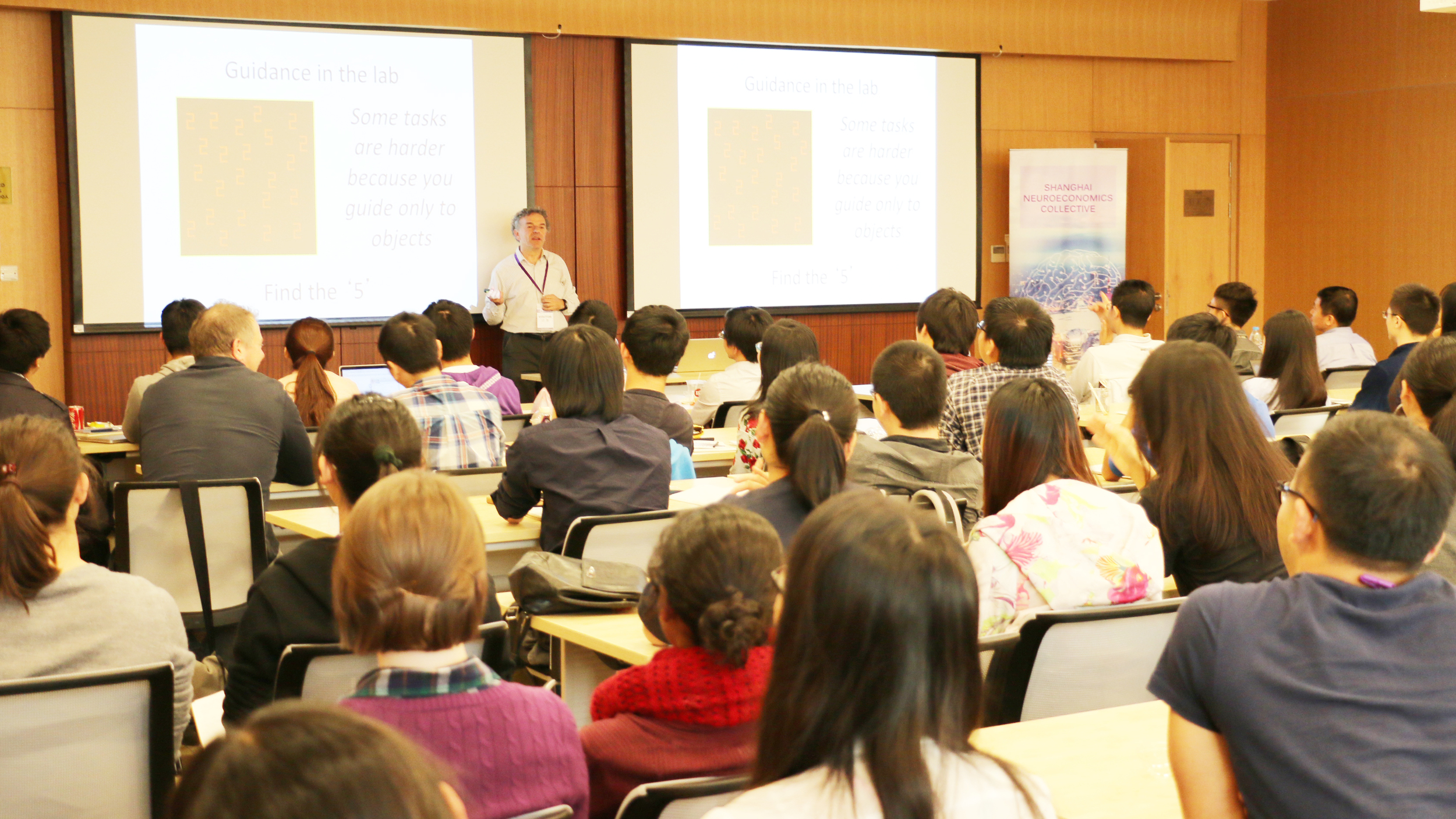
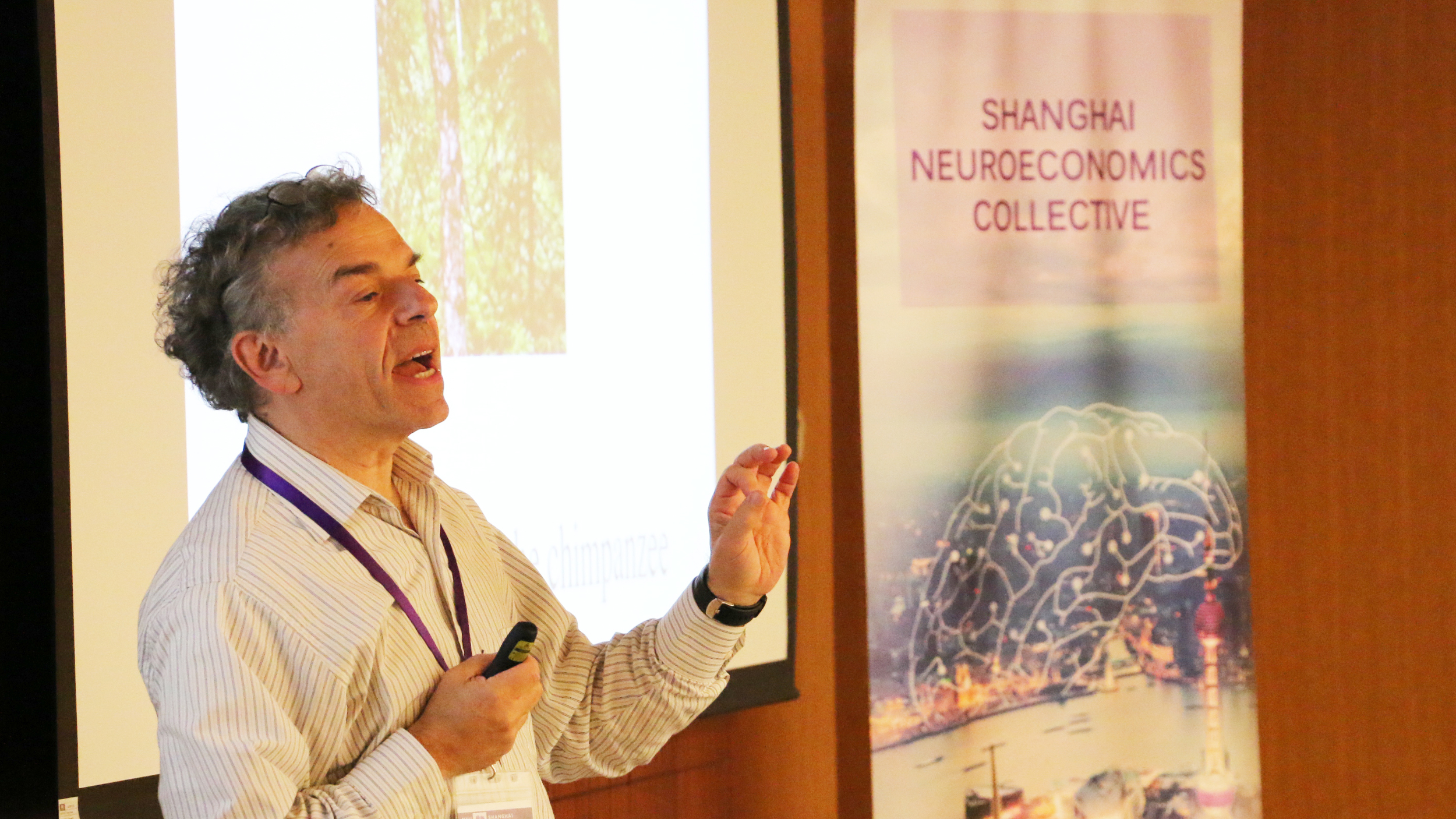
2014-2015 Year
January 29, 2015: Inaugural Session
Paul Glimcher, PhD
New York University
Talk Title: Incorporating Neurobiological Constraints can Rationalize Human Choice Behavior
Abstract: Over the course of the last decade neuroeconomists have gathered a tremendous amount of information about the structure of neural representations. We now know how quantities are represented in the brain and what the relative costs of different forms of representation are. Neoclassical economists have spent nearly a century building theories of choice that are fundamentally theories about representation, but these utility-based theories have turned out to be incompletely predictive of human behavior. Our most recent studies indicate that one key failure of neoclassical economic theory was its failure to incorporate the costs of computation and representation into its core theoretical framework. Our theoretical and experimental work suggests that once these costs are specified (in a minimally restrictive but quite complete way) much of the hoped-for predictive power of neoclassical economics can be recovered.
News article: "Renowned Neuroscientist Inaugurates Shanghai Colloquium in Neuroeconomics" (NYU Shanghai)
Watch the full lecture here
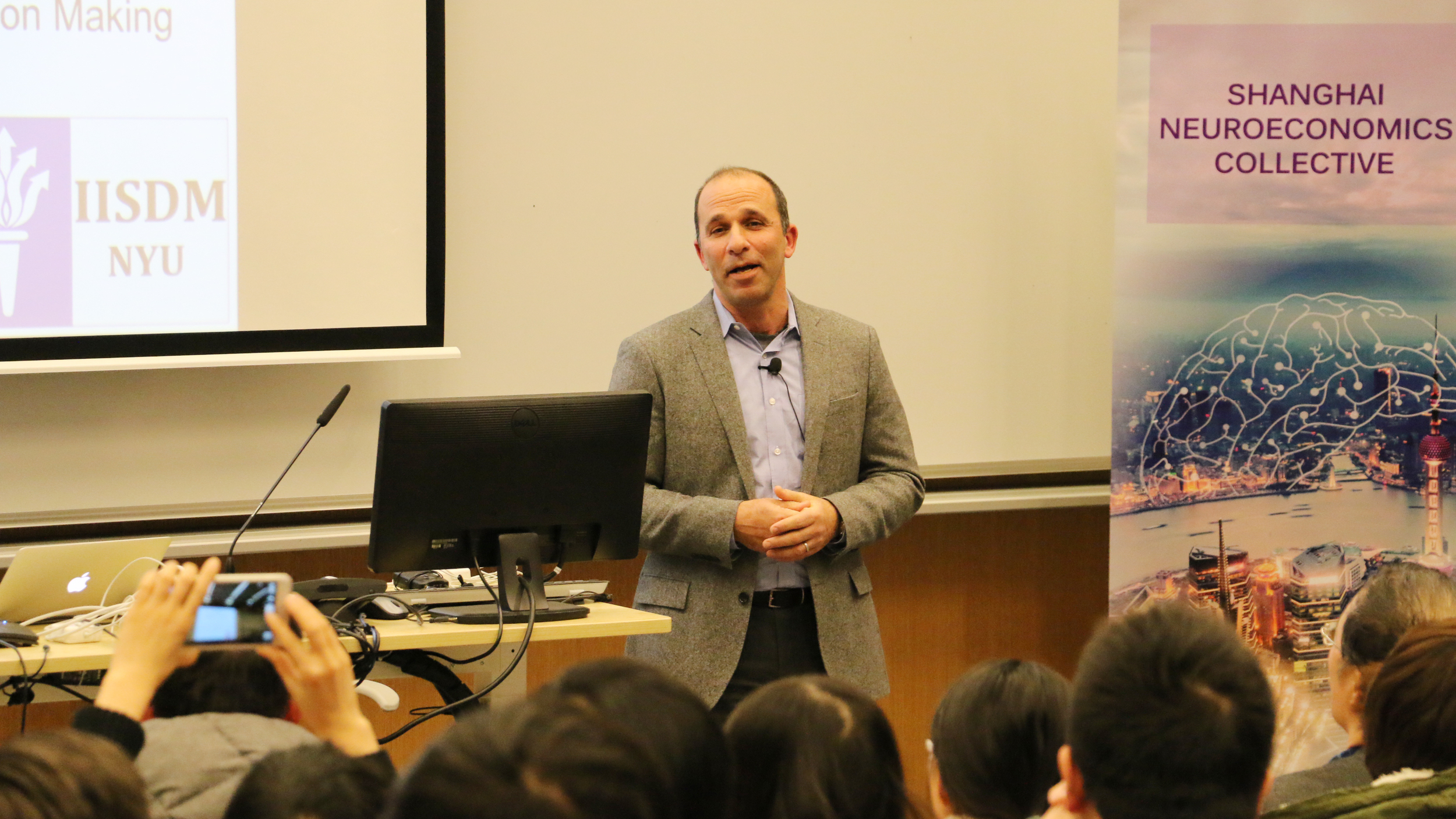
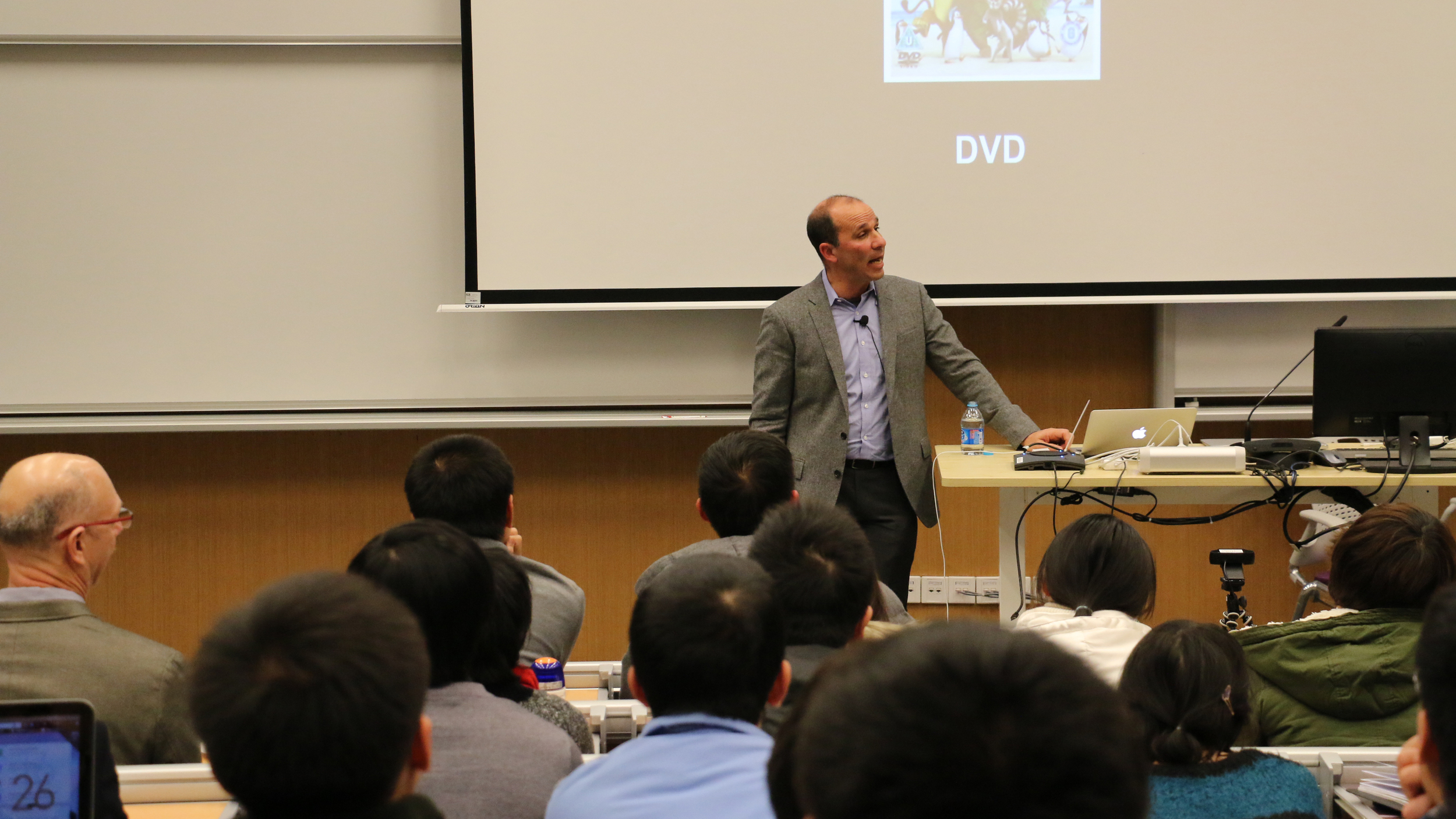

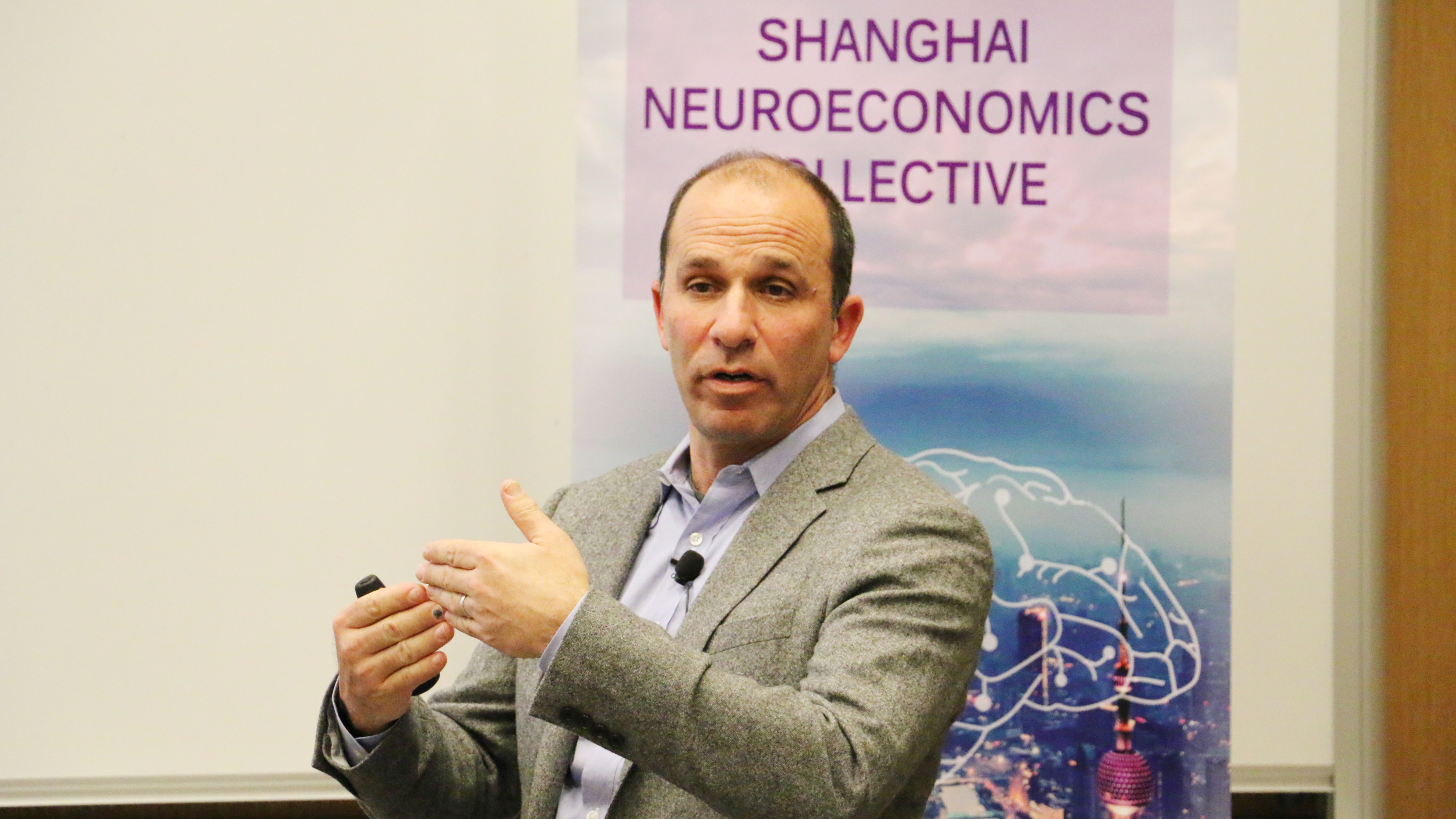
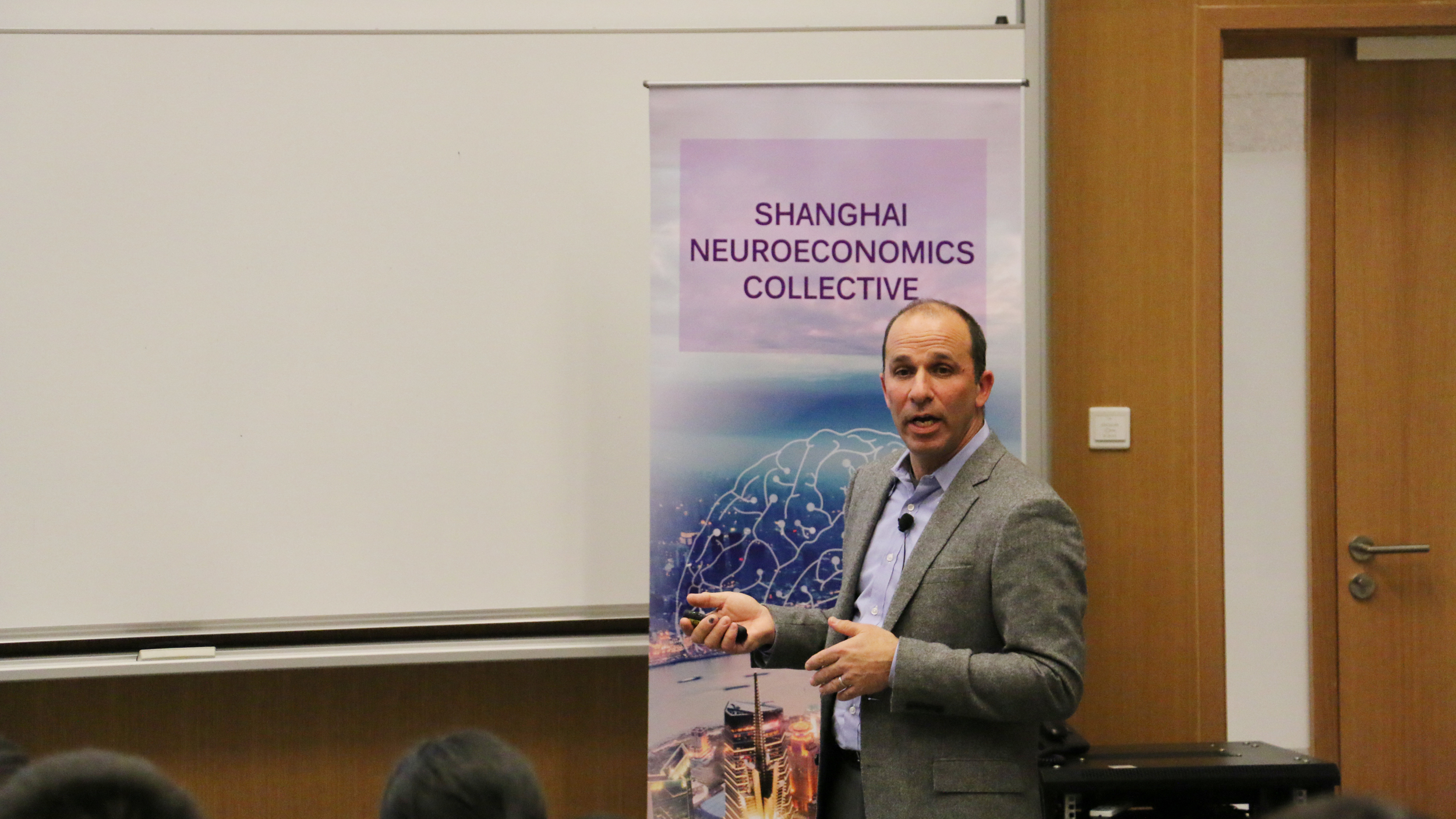


March 05, 2015
Clay Curtis, PhD
New York University
Talk Title: Incorporating Neurobiological Constraints can Rationalize Human Choice Behavior
Abstract: The prefrontal and posterior parietal cortices (PFC/PPC) sit at the apex of the sensorimotor hierarchy and are important for the selection and planning of voluntary action and are thought to bias the processing in sensory areas towards behaviorally relevant dimensions. Recently, several lines of evidence from a variety of disciplines have converged on a theory positing that activity in the frontal and parietal cortices constitutes maps of prioritized space. In this conceptual framework, priority maps tag important locations in the visual field and are constructed both from the salience (e.g., conspicuousness) of objects and its current relevance (e.g., task goal). Activity in a priority map could be used to select between competing representations of actions in the motor system or between competing representations of objects in the visual system. I will describe recent efforts in my lab to test whether patterns of neural activity in the human PFC and PPC are consistent with predictions from the priority map theory. Using novel topographic mapping techniques to identify candidate priority maps in PFC and PPC, we then perform a number of experiments to test hypotheses about the nature of what is being prioritized. In general, we find that sculpted activity in topographically organized maps of prioritized space in PFC and PPC could be read out to guide a variety of spatial cognitive behaviors.
News article (Chinese): "探秘人类高级认知功能在大脑中的投射"(NYU Shanghai)
Watch the full lecture here
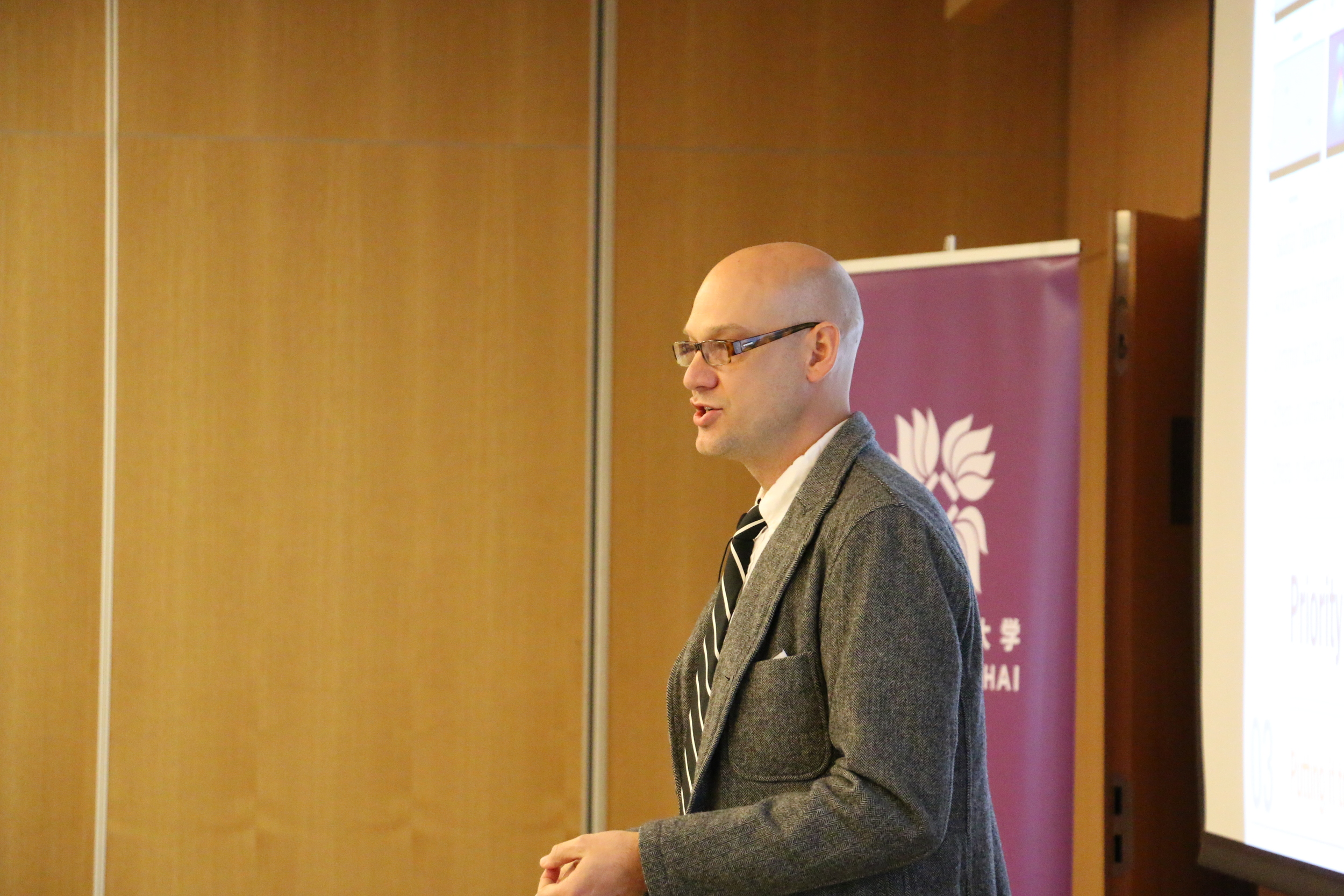

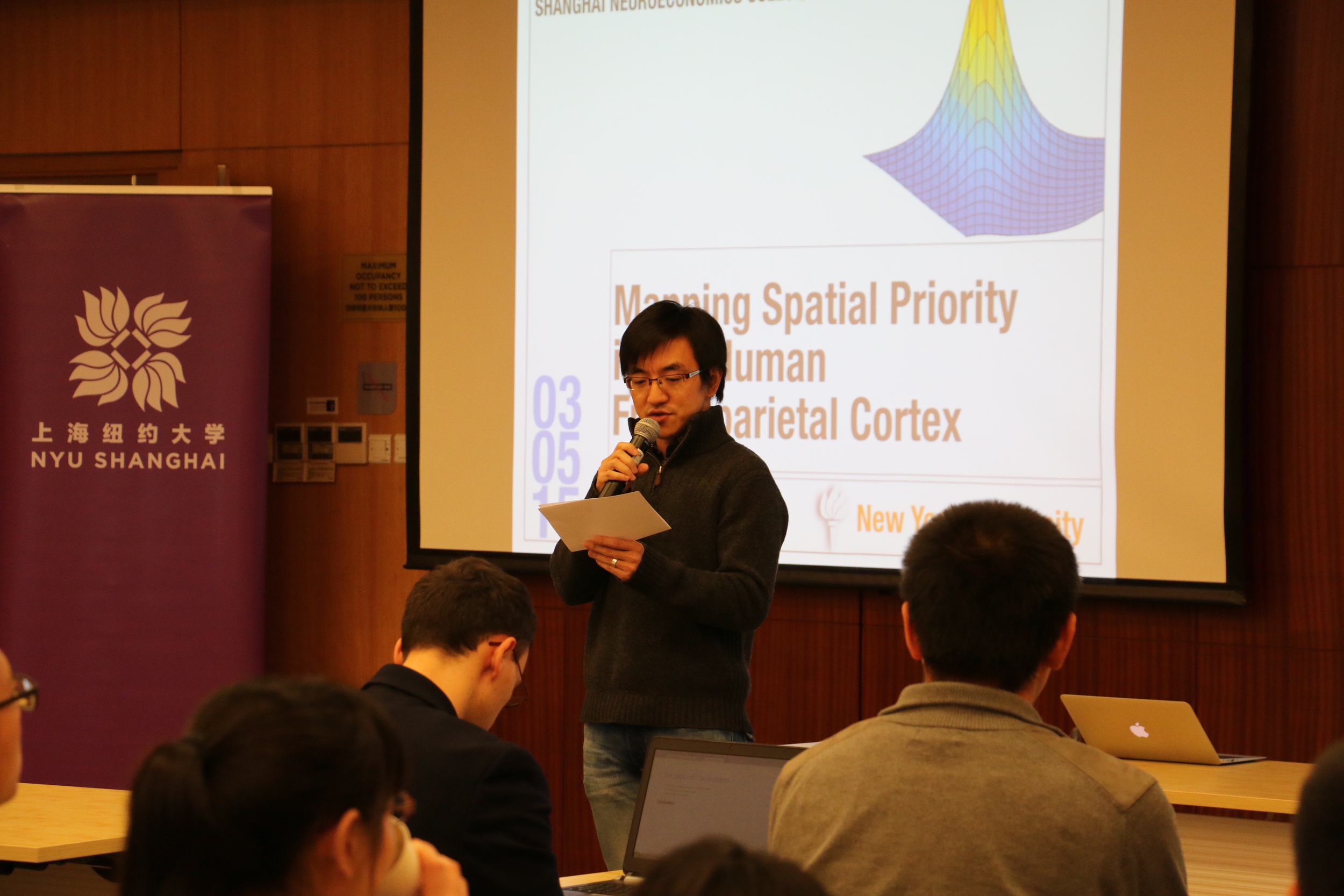
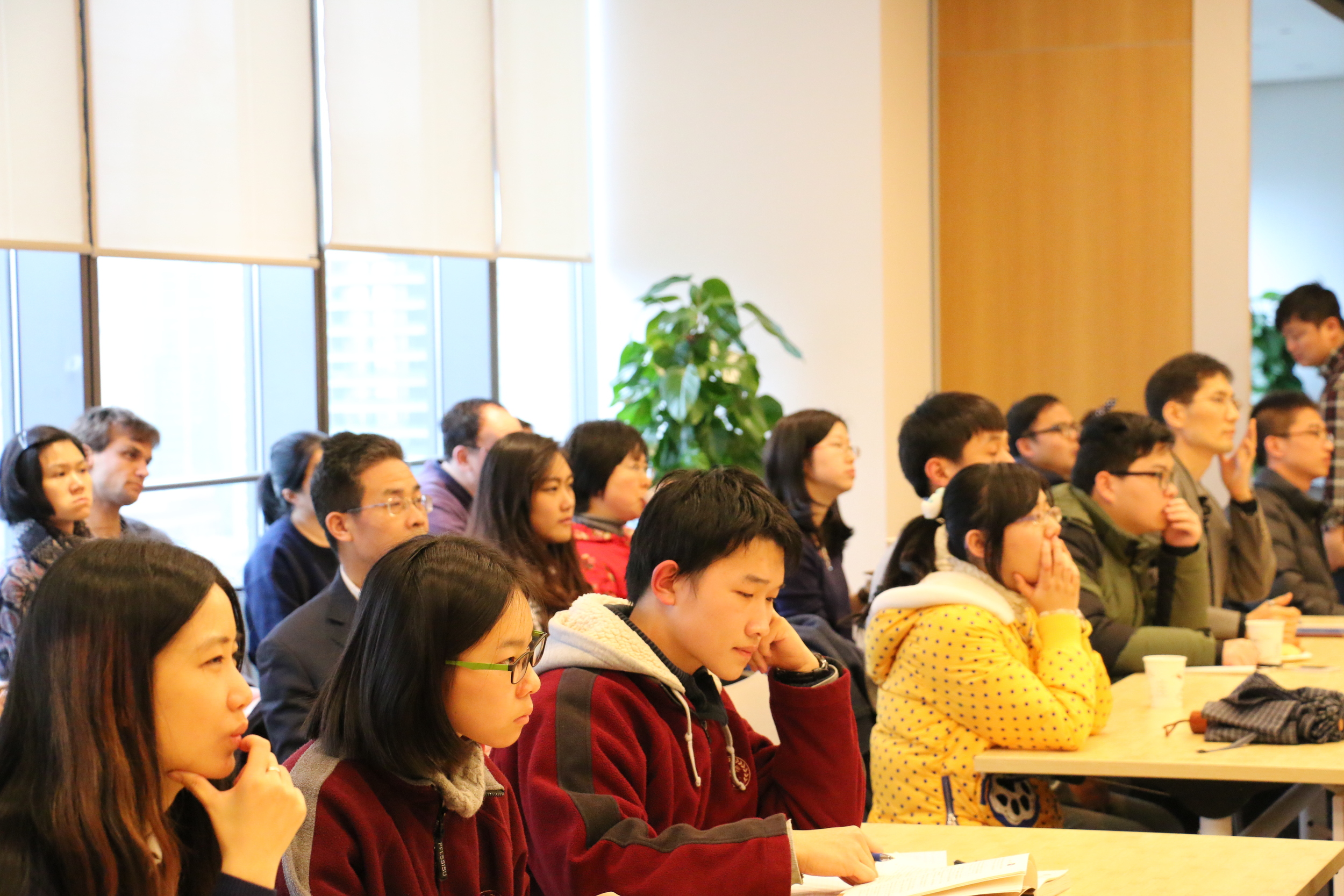
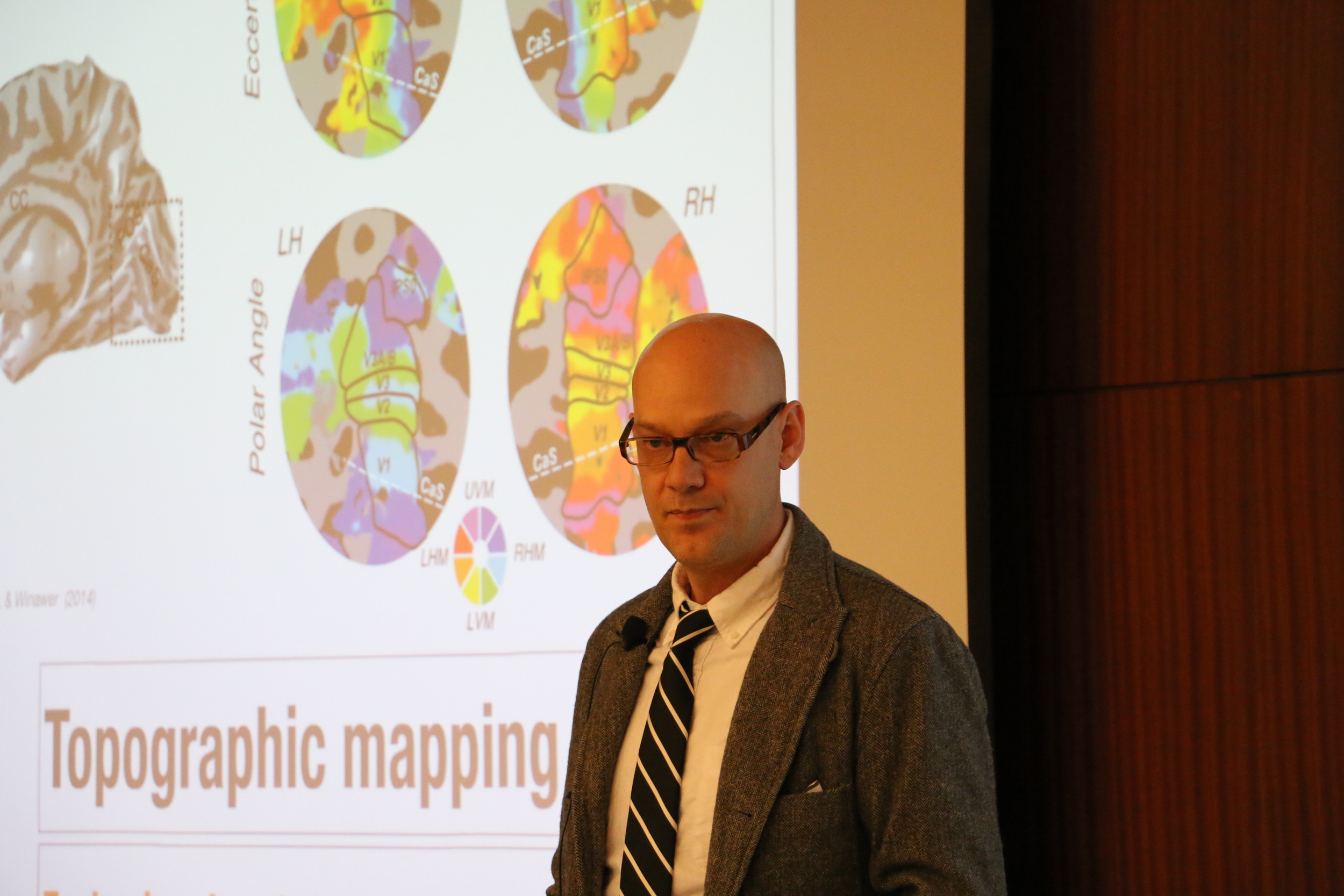

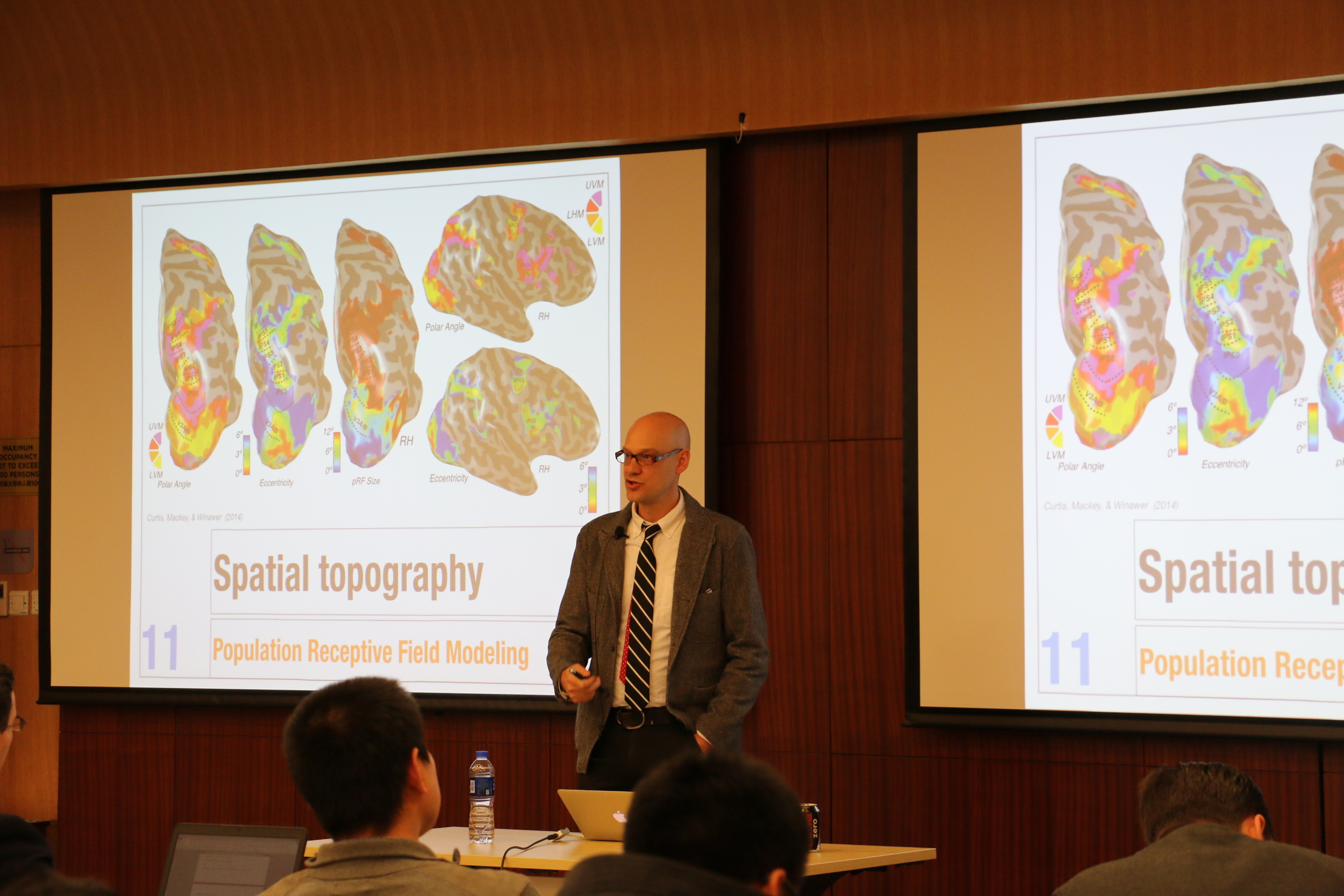
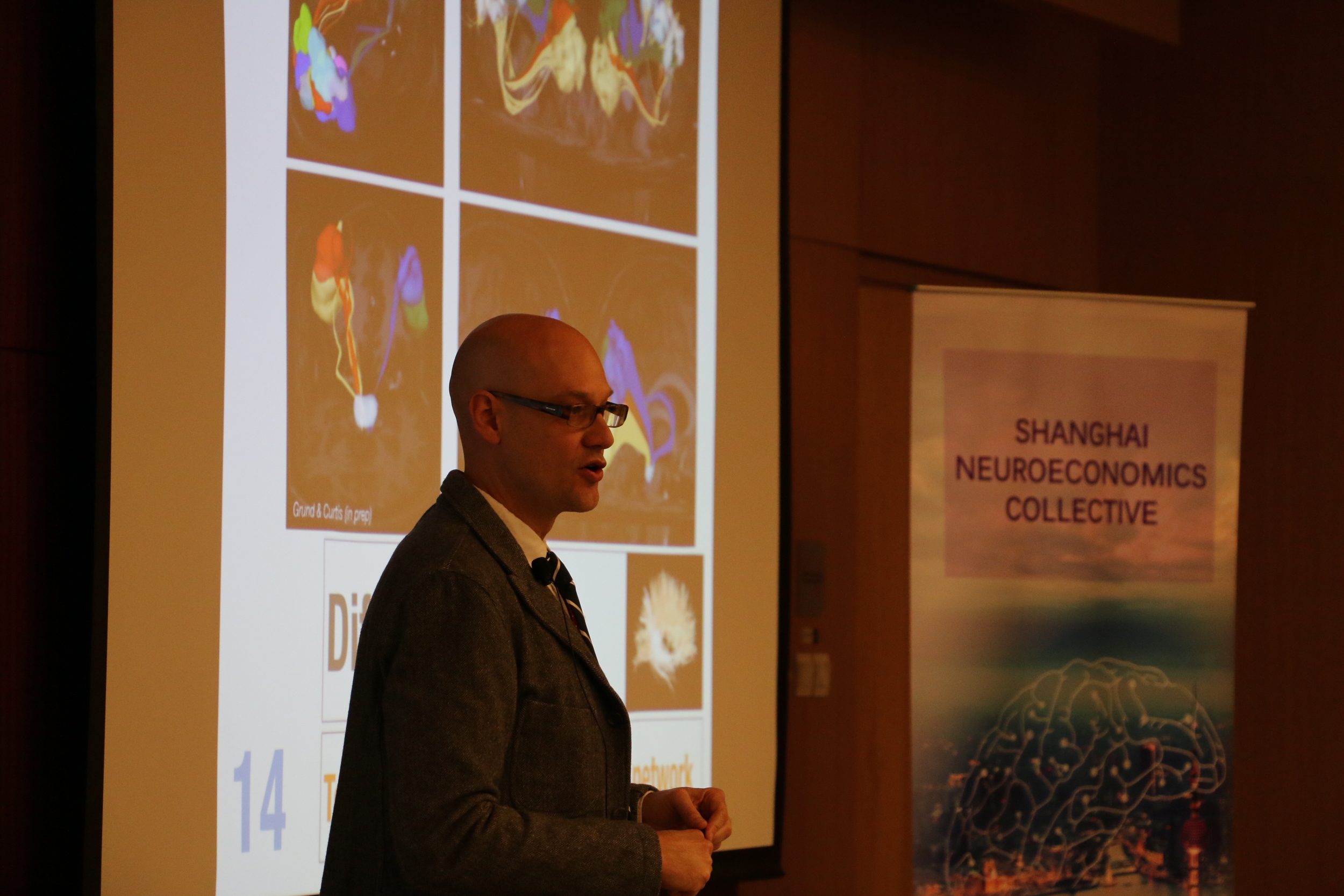
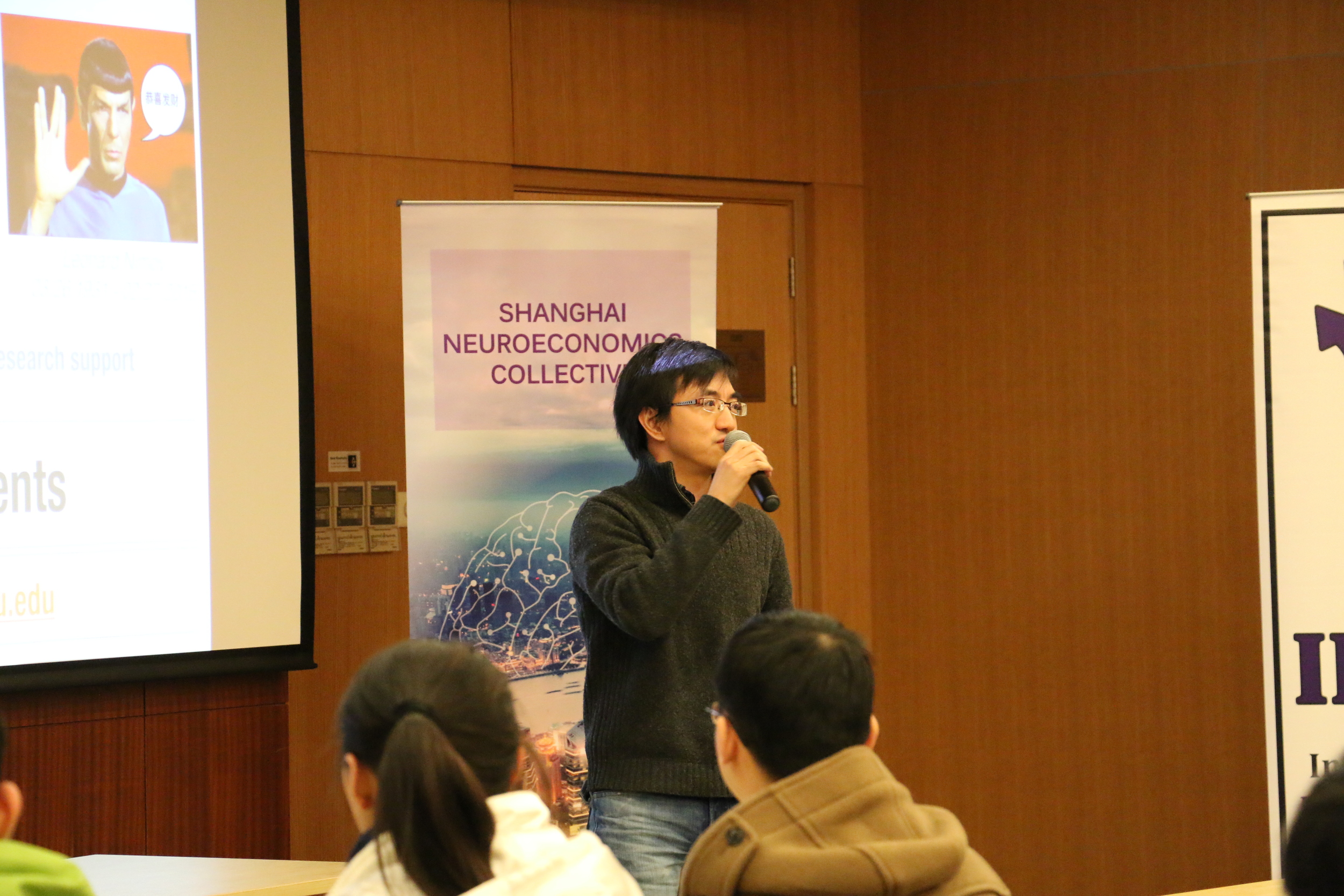
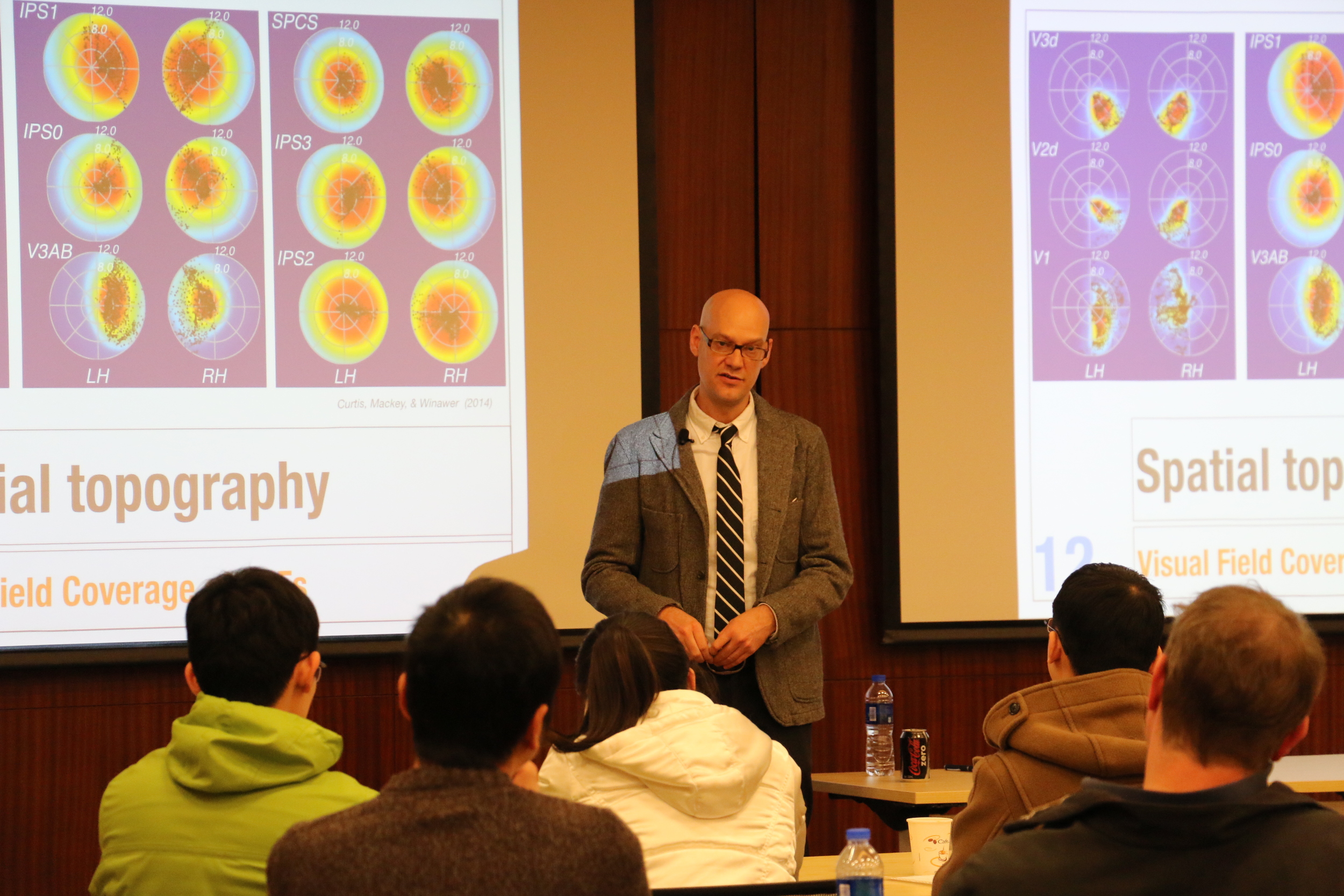

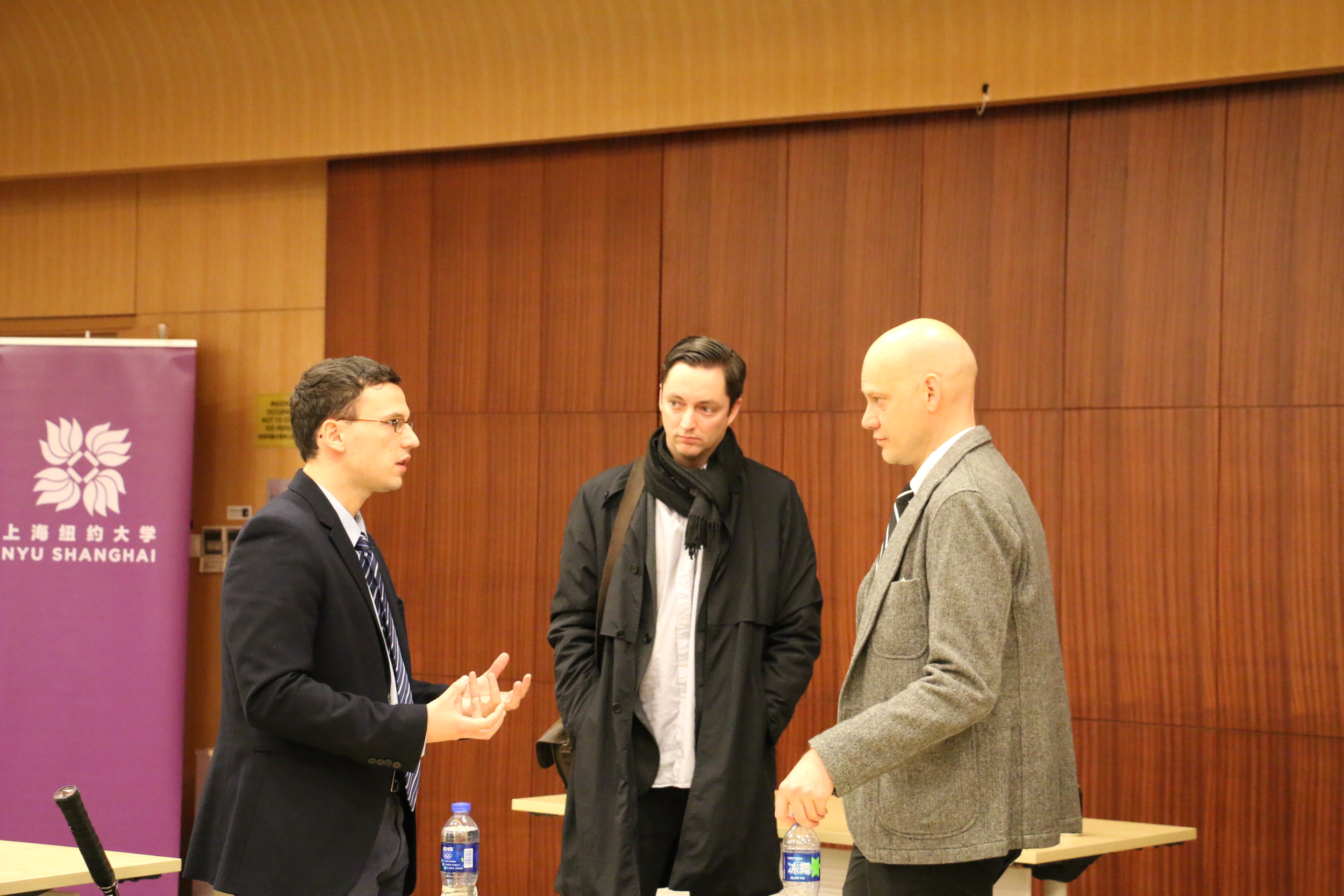
March 26, 2015
Kenji Doya, PhD
Okinawa Institute of Science and Technology
Talk Title: Control of Patience and Serotonin
Abstract: Evaluation of delayed reward is an essential component of intelligence and also critical in economic decision making. We hypothesized that the brain’s serotonergic system regulates the temporal discounting of future rewards. Human brain imaging experiments showed that different cortico-basalganglia loops are involved in reward prediction in different time scales and that they are differentially modulated by serotonerin. Chemical recording and manipulation in rats showed that serotonin release is elevated when animals are engaged in delayed reward tasks and that suppression of dorsal raphe serotonin neurons increase reward waiting errors. Electrode recording of dorsal raphe neurons revealed that their firing increases during reward waiting period and drops just before the animal abandons waiting. Optogenetic activation of dorsal raphe serotonin neurons reduced waiting errors and extended waiting time in reward omission trials. These results showed that dorsal raphe serotonin neurons control the patience for delayed rewards in a dynamic way.
Watch the full lecture here

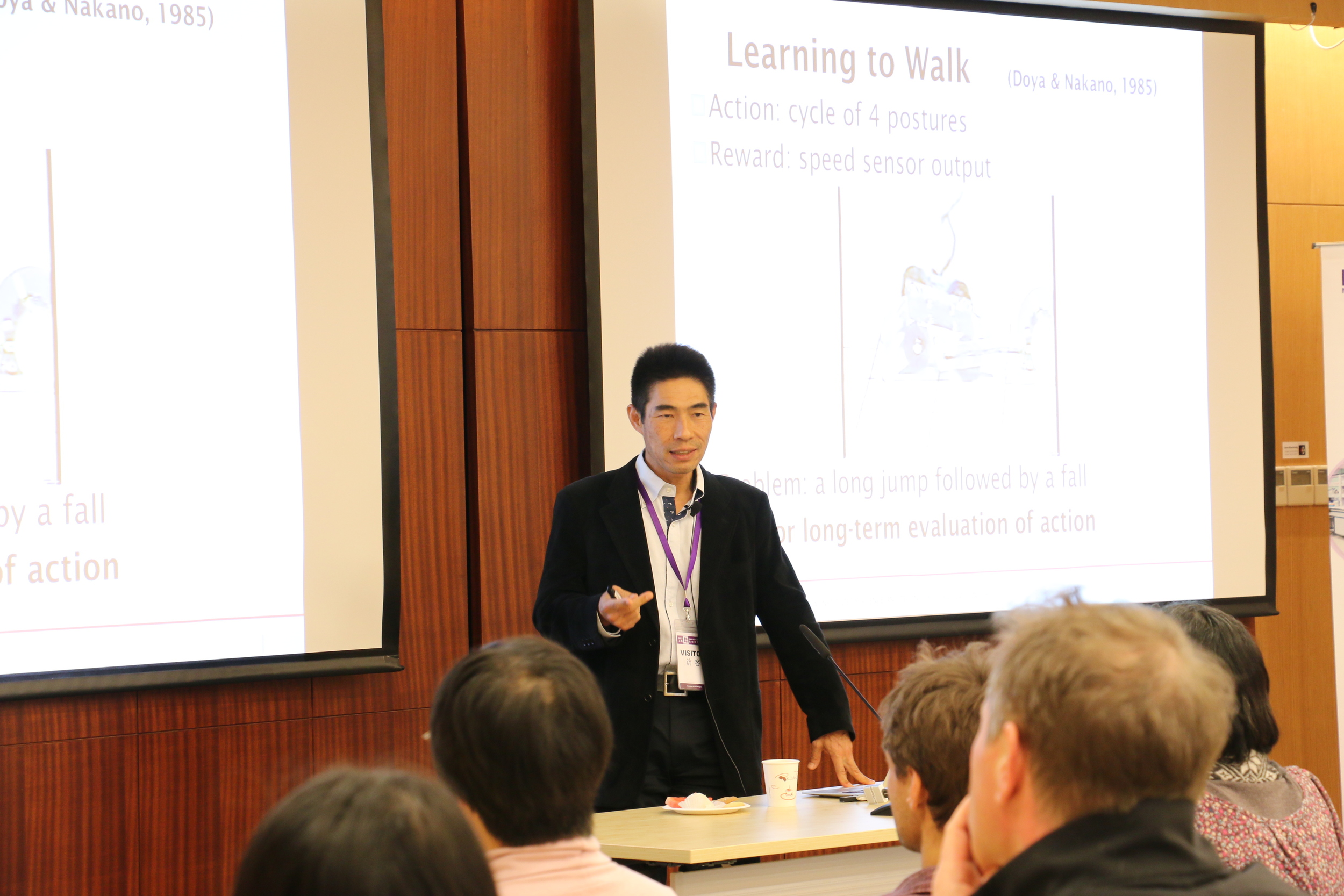
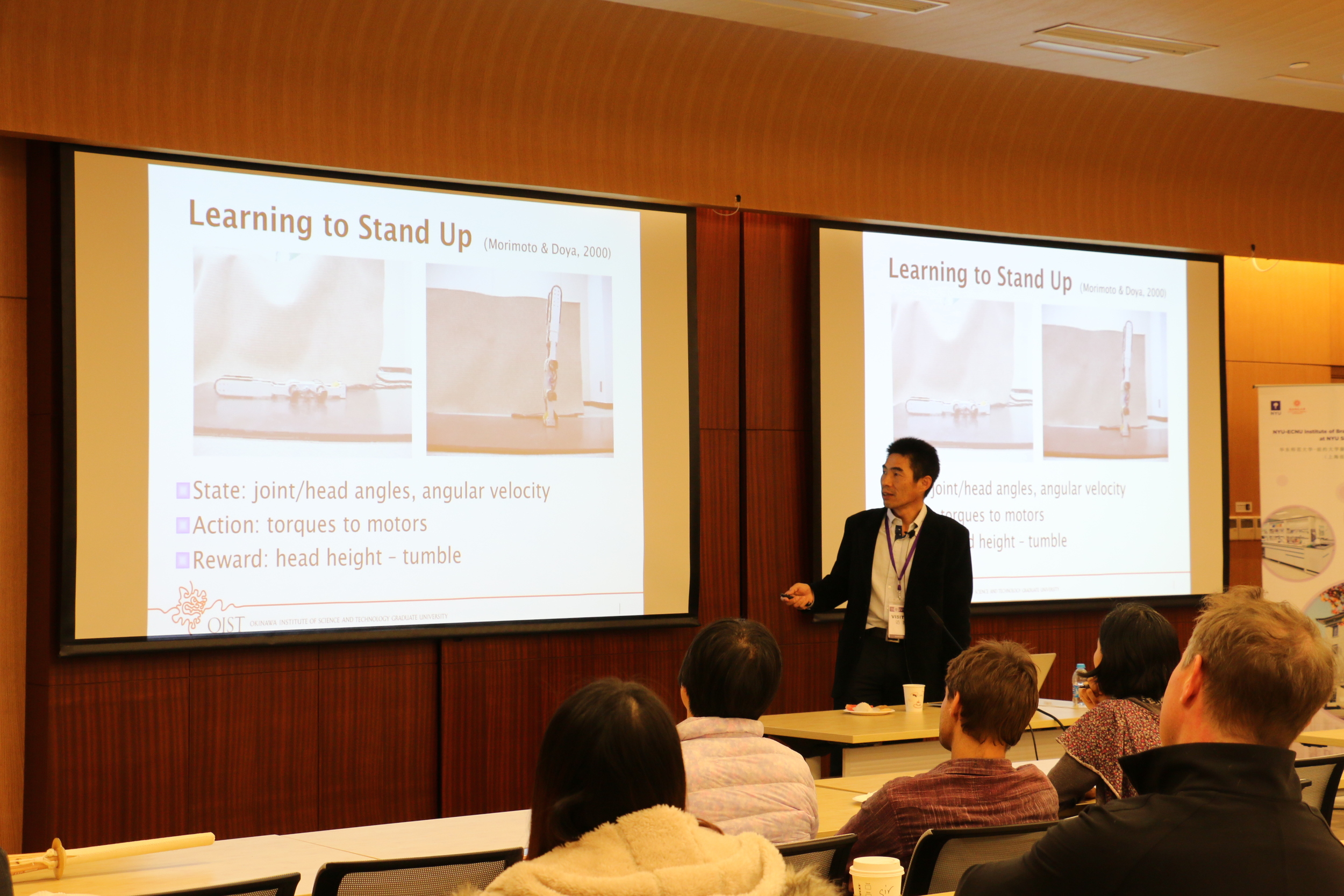
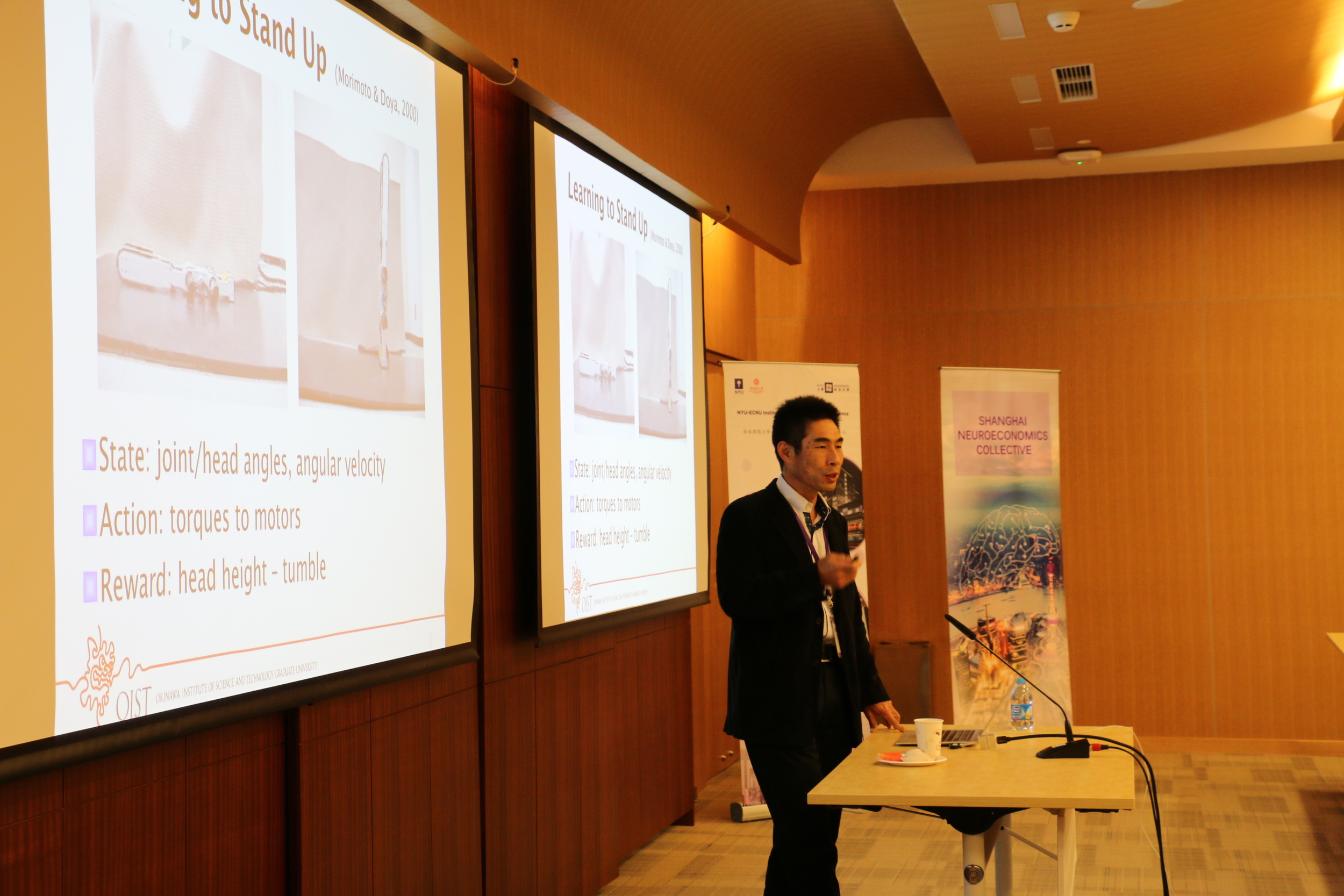
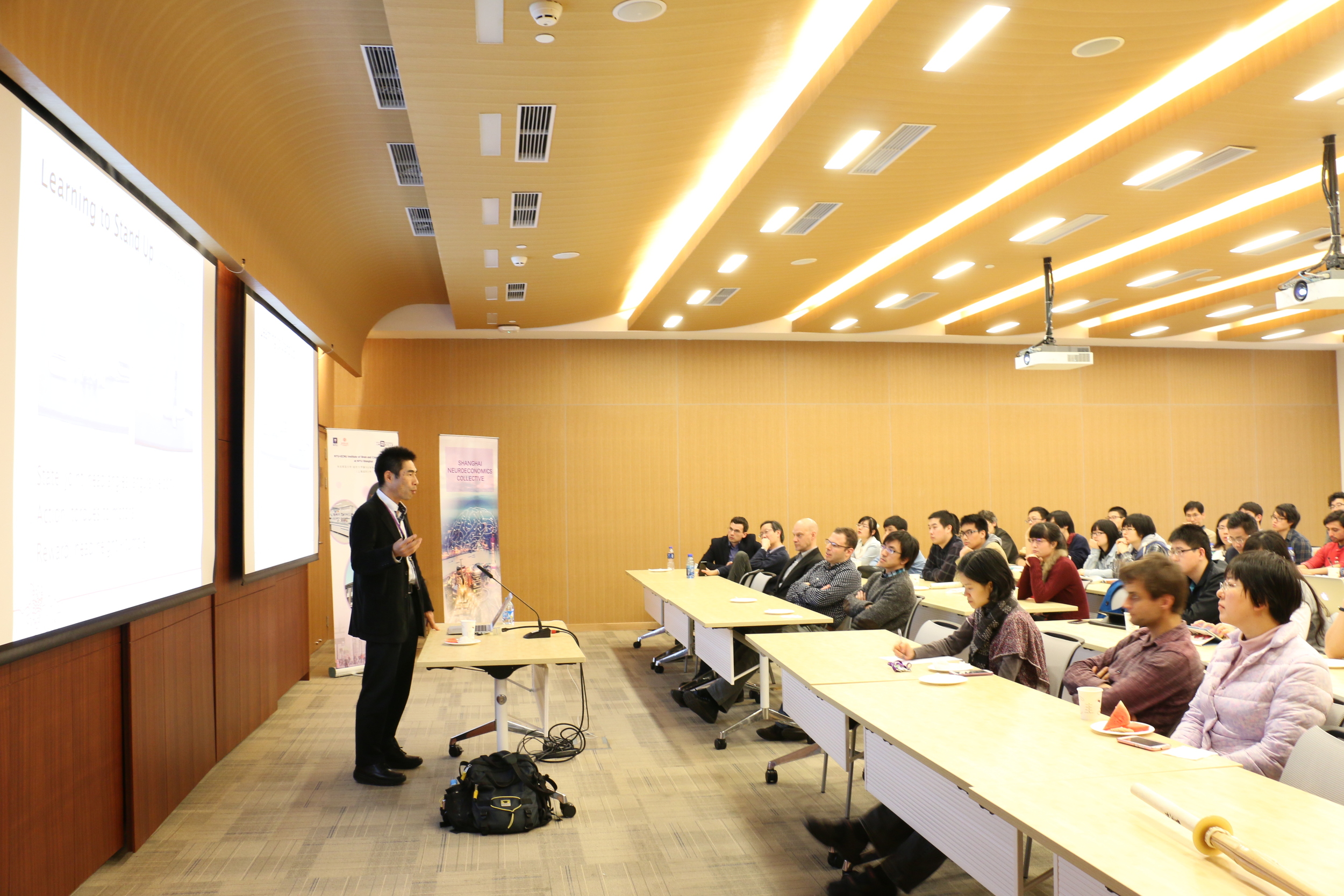

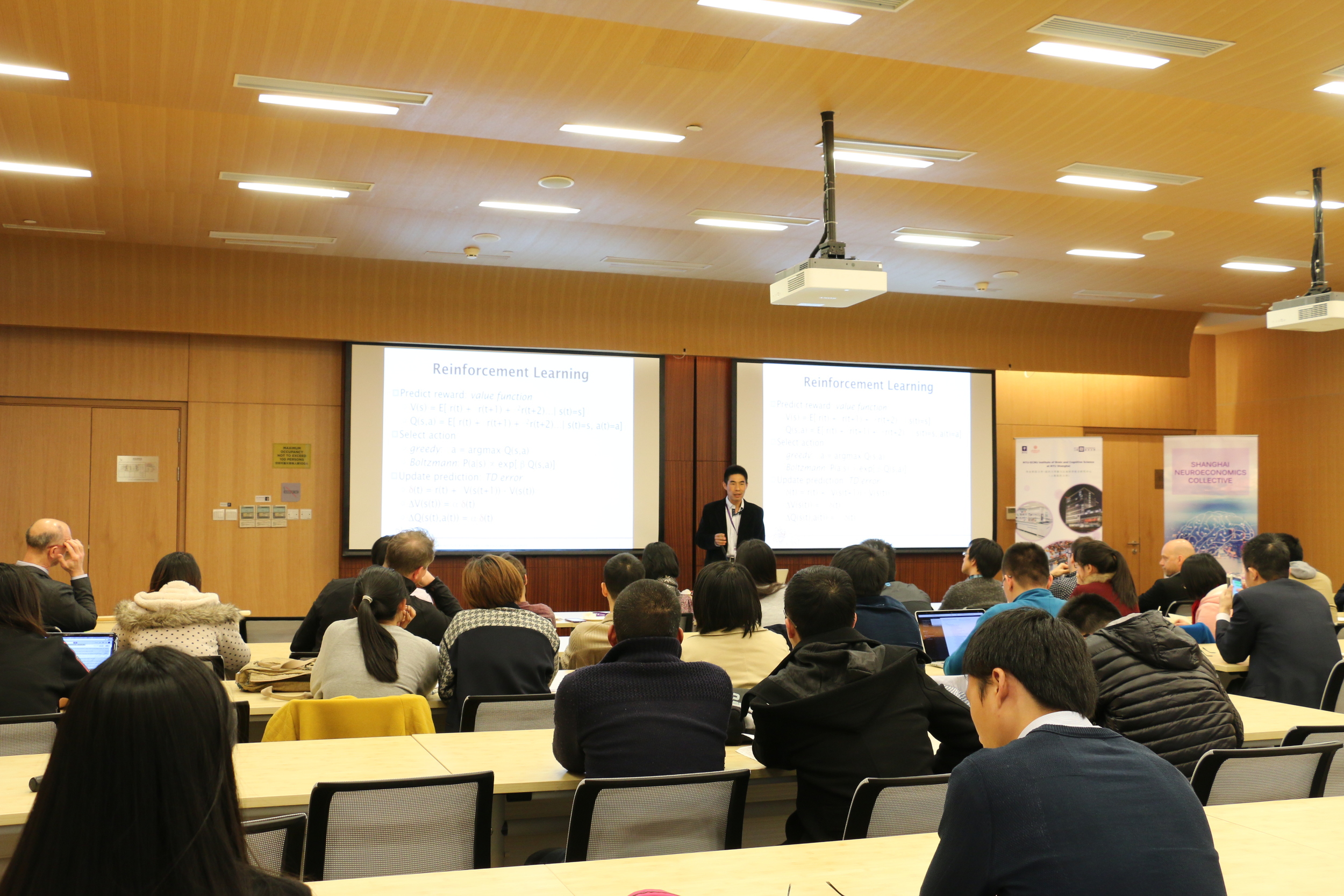
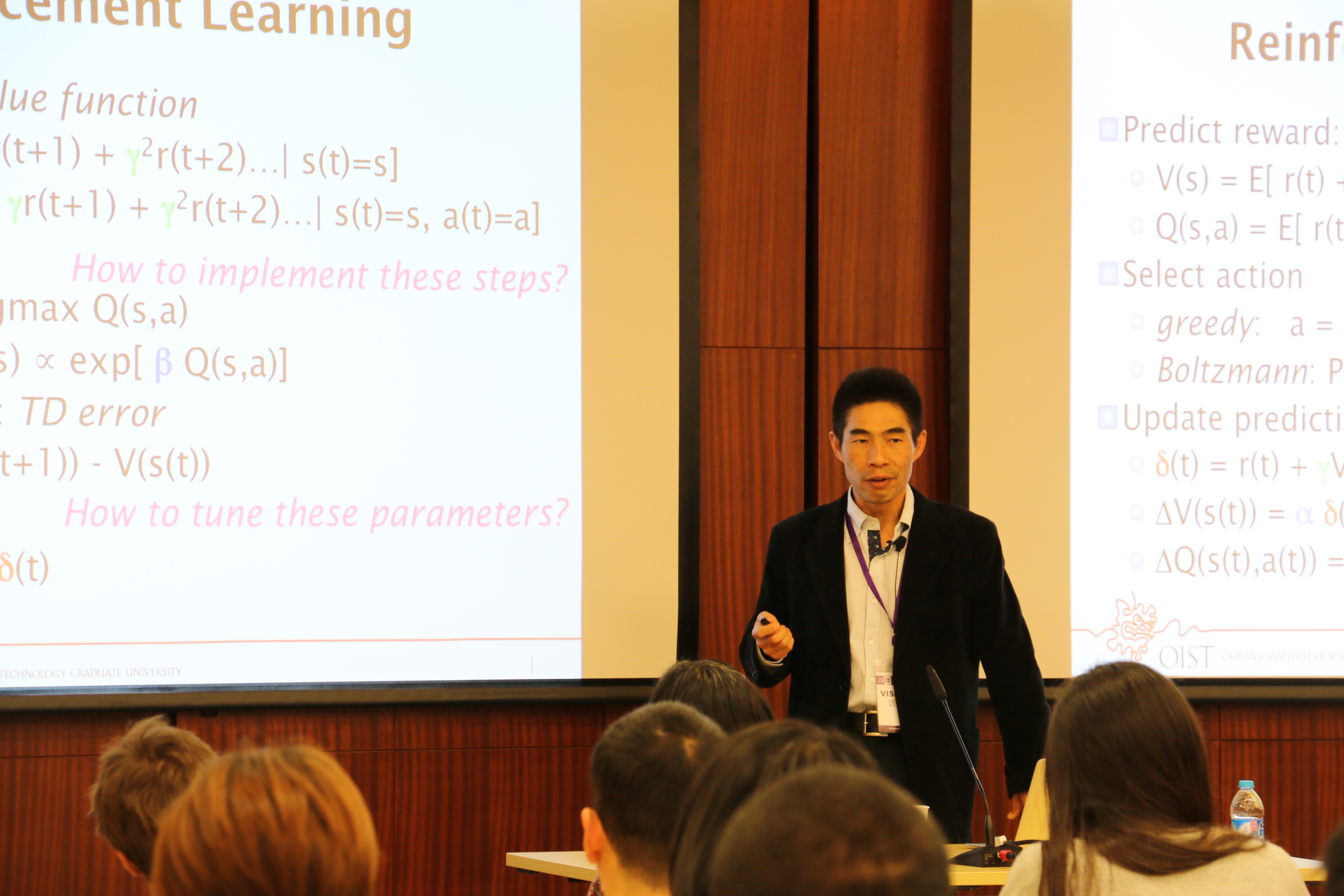
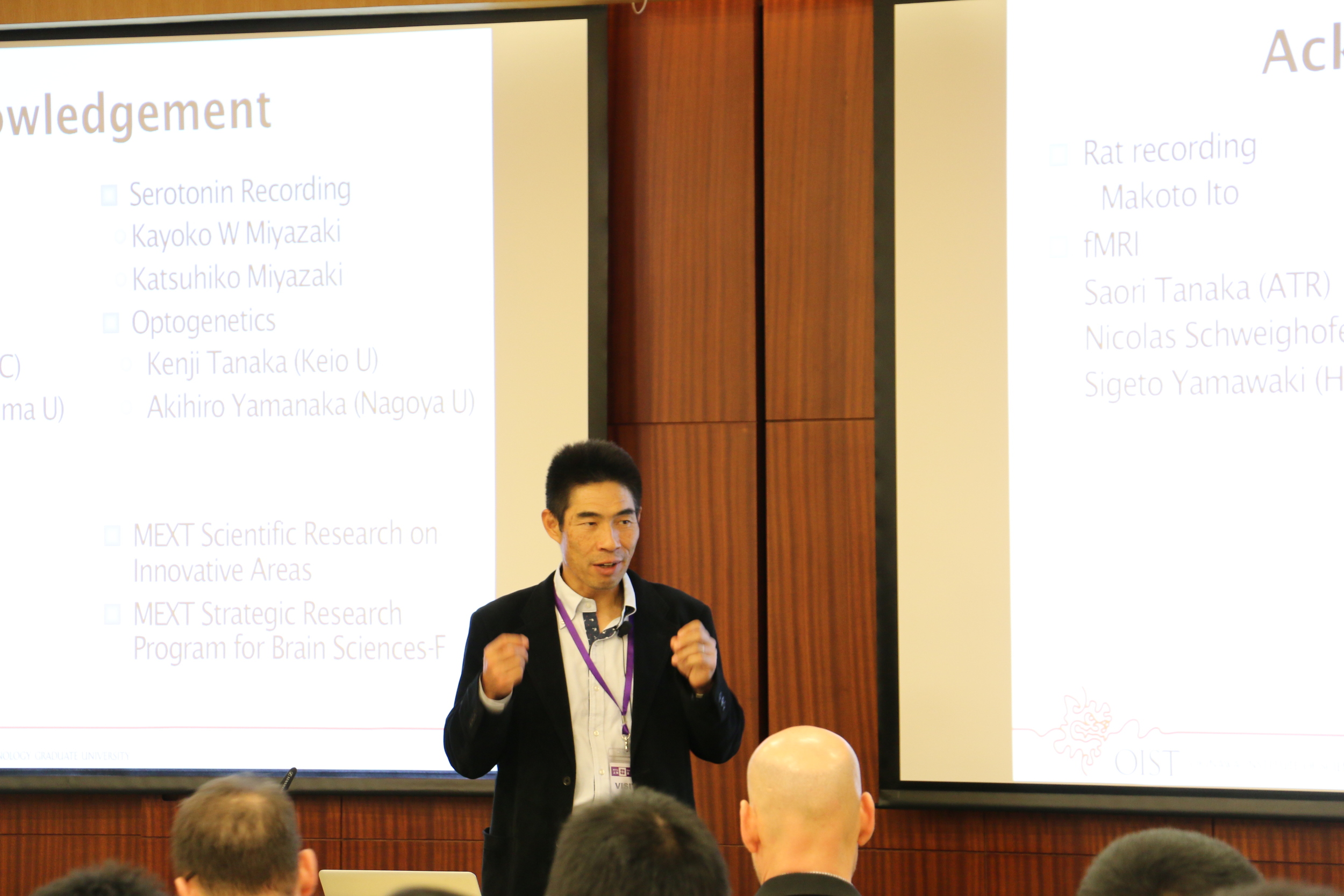

May 14, 2015
John Pearson, PhD
Duke University
Talk Title: Mining the Brain in an Age of Big Data
Abstract: Like genetics twenty years ago, neuroscience is currently anticipating the approach of a tidal wave of data. From hundreds of simultaneously recorded neurons to rich and complex social behavior, a new generation of experiments has already begun to challenge our conventional methods for visualizing, analyzing, and interpreting information. Machine learning methods have tremendous potential to address these issues, but their greatest successes have come in engineering rather than scientific applications. I will discuss several key considerations involved in applying these methods to neuroscience and illustrate with case studies including data from both humans and animal models.
Watch the full lecture here

